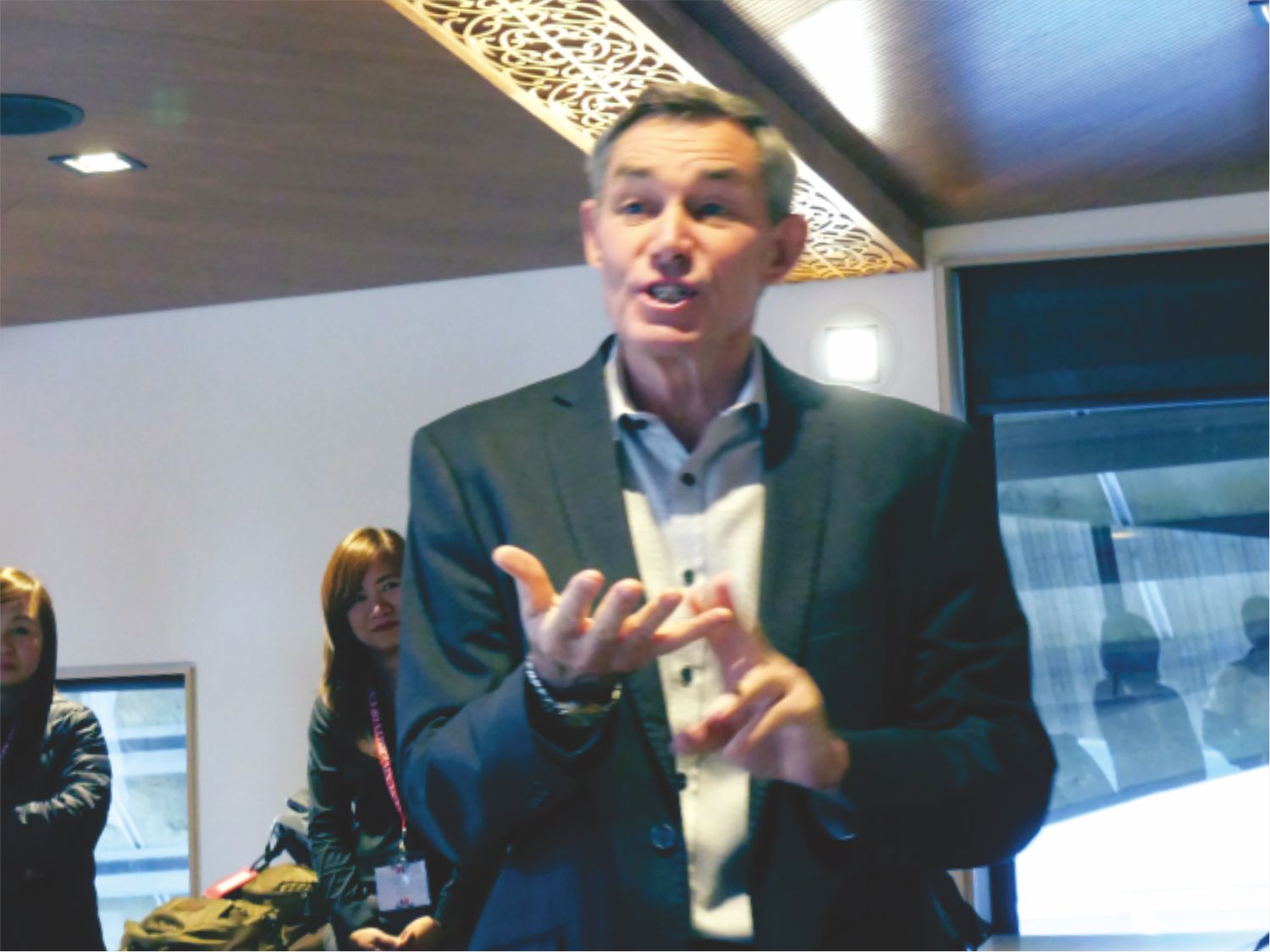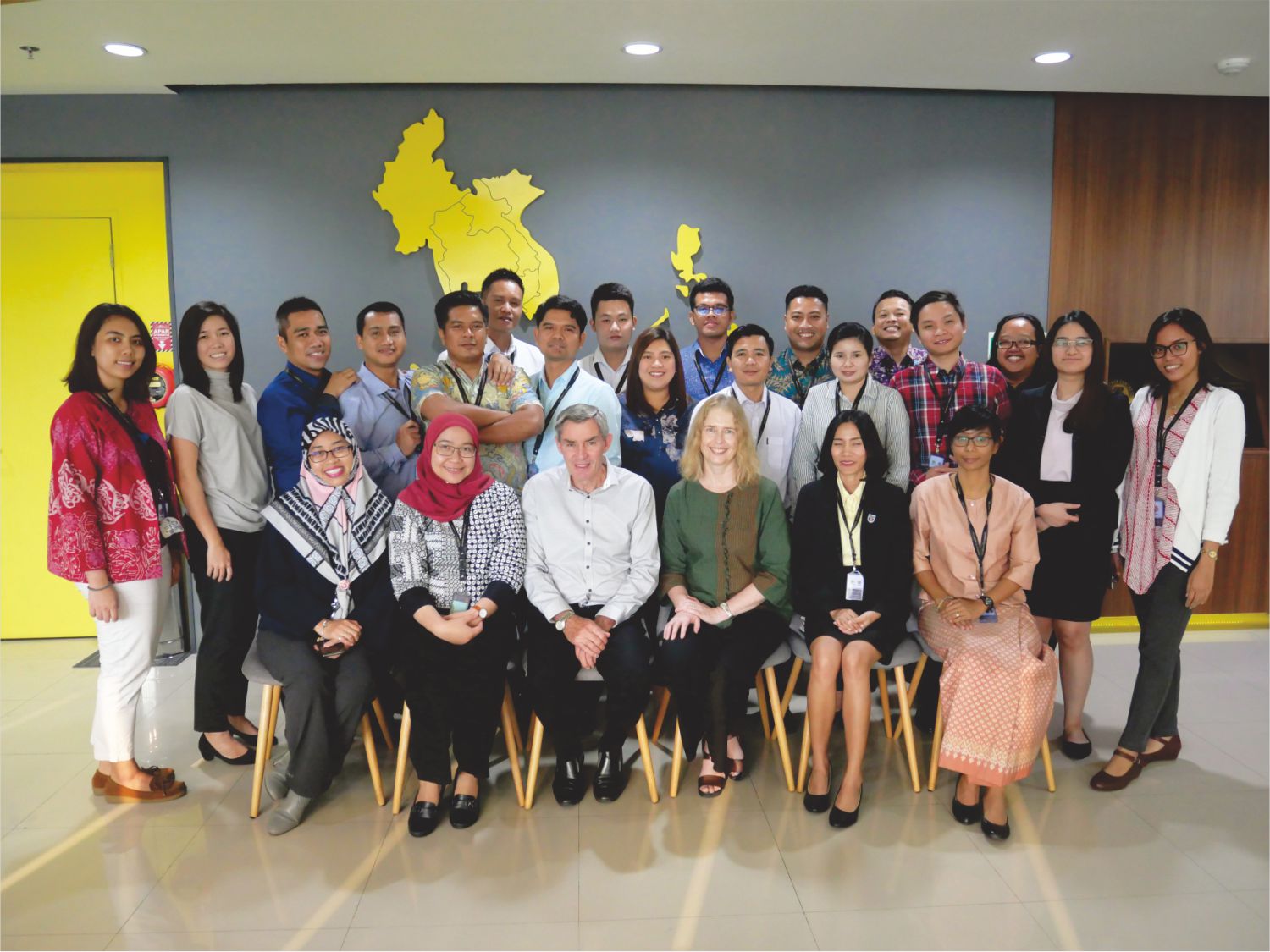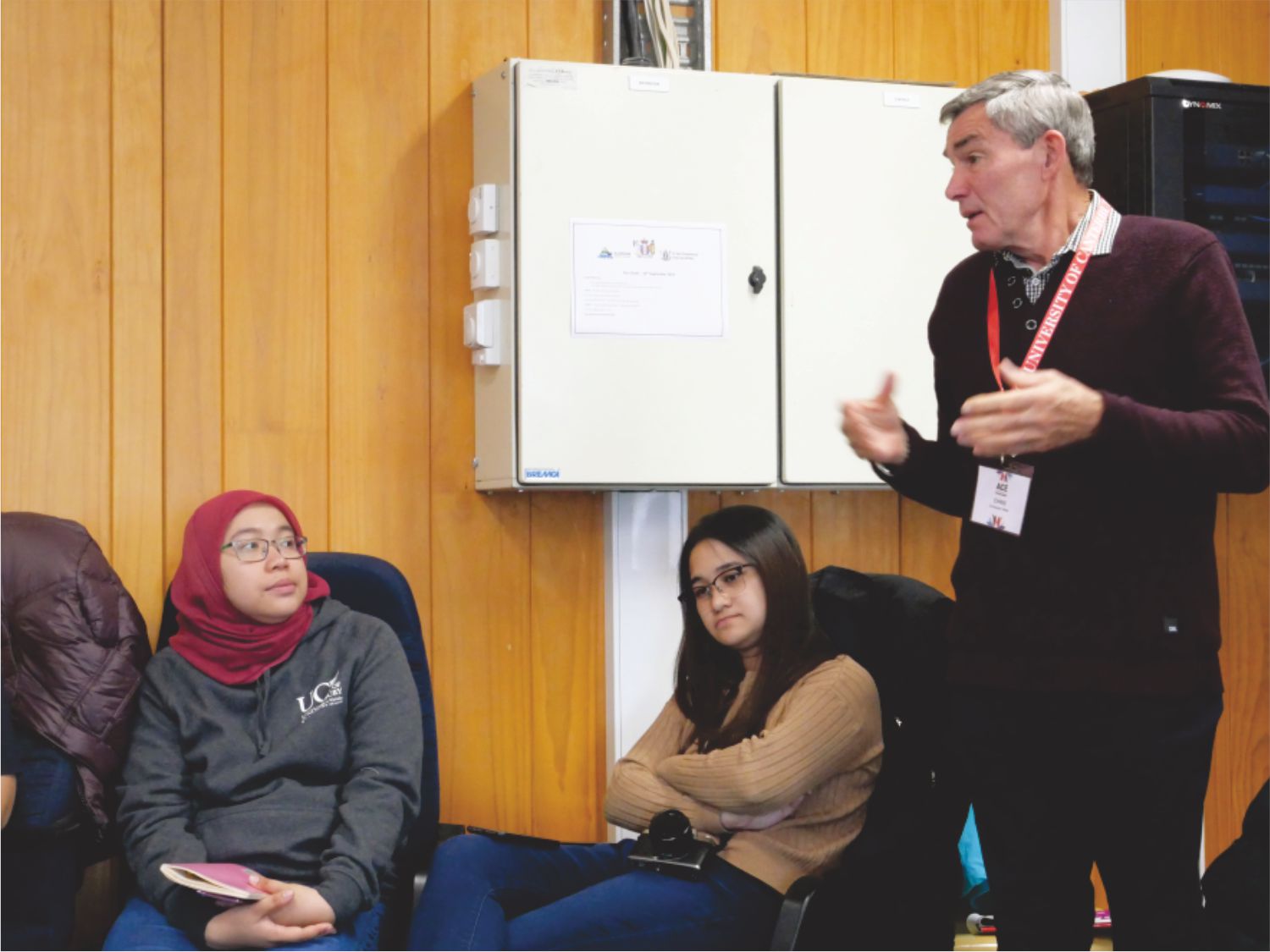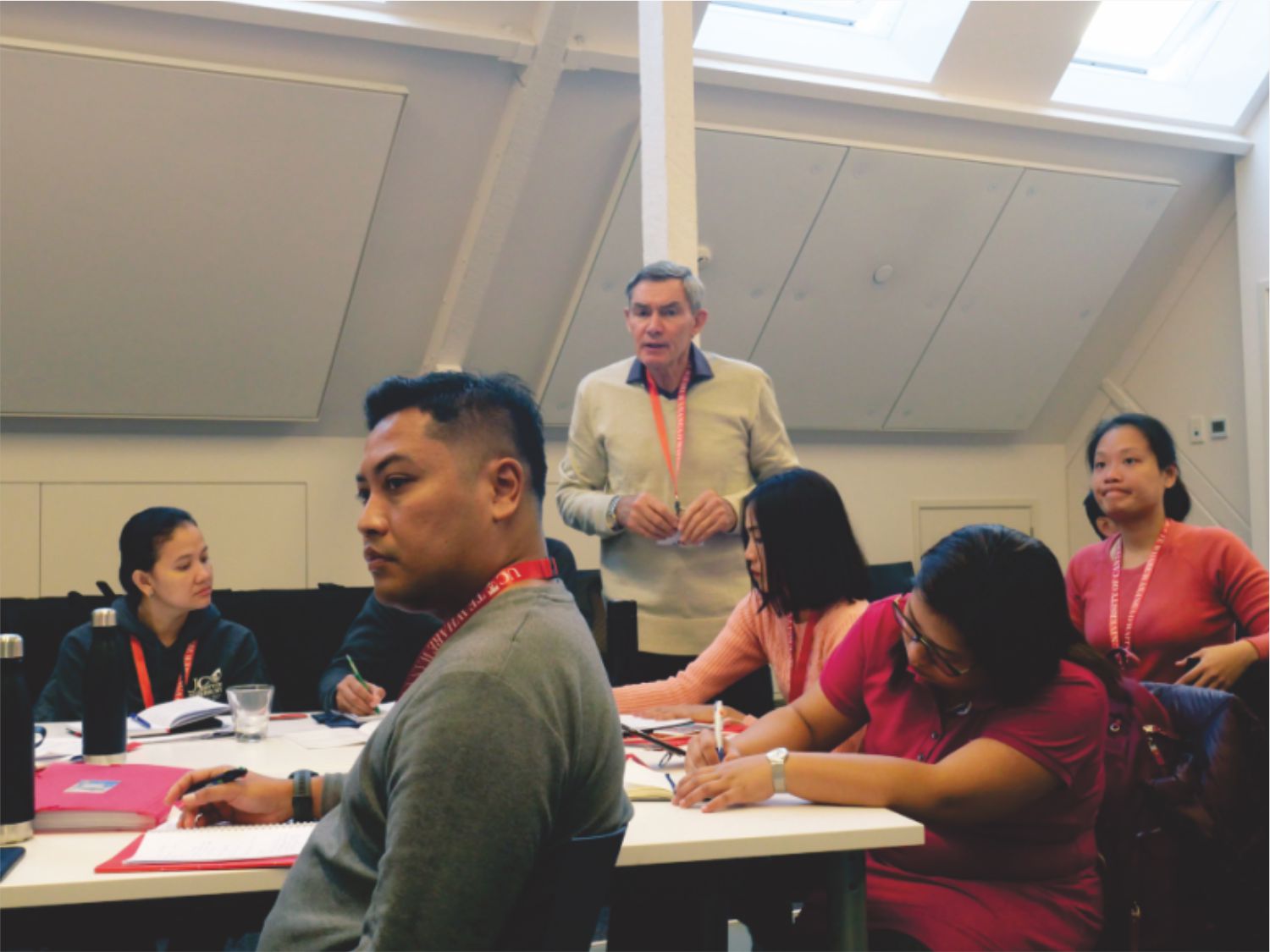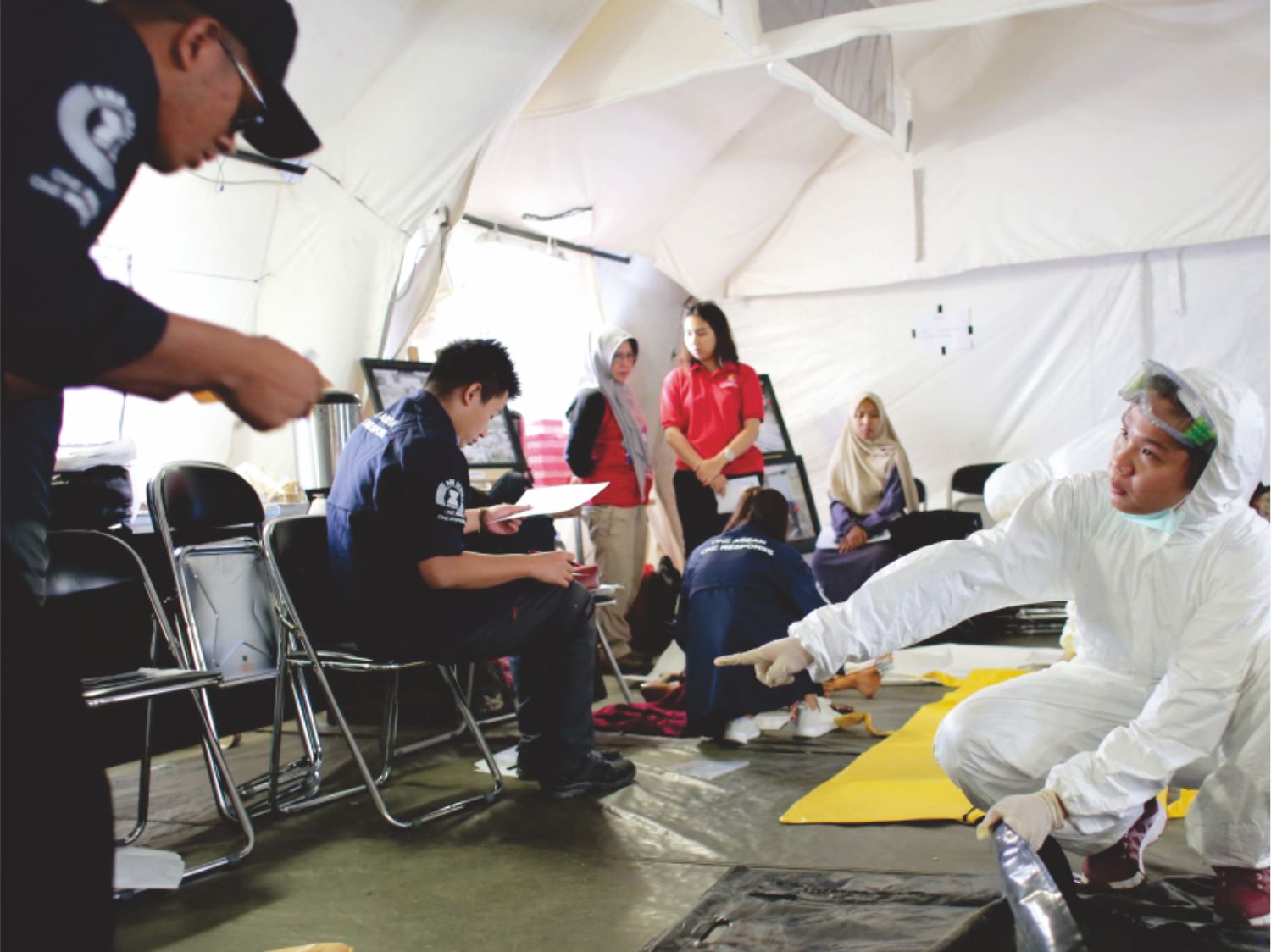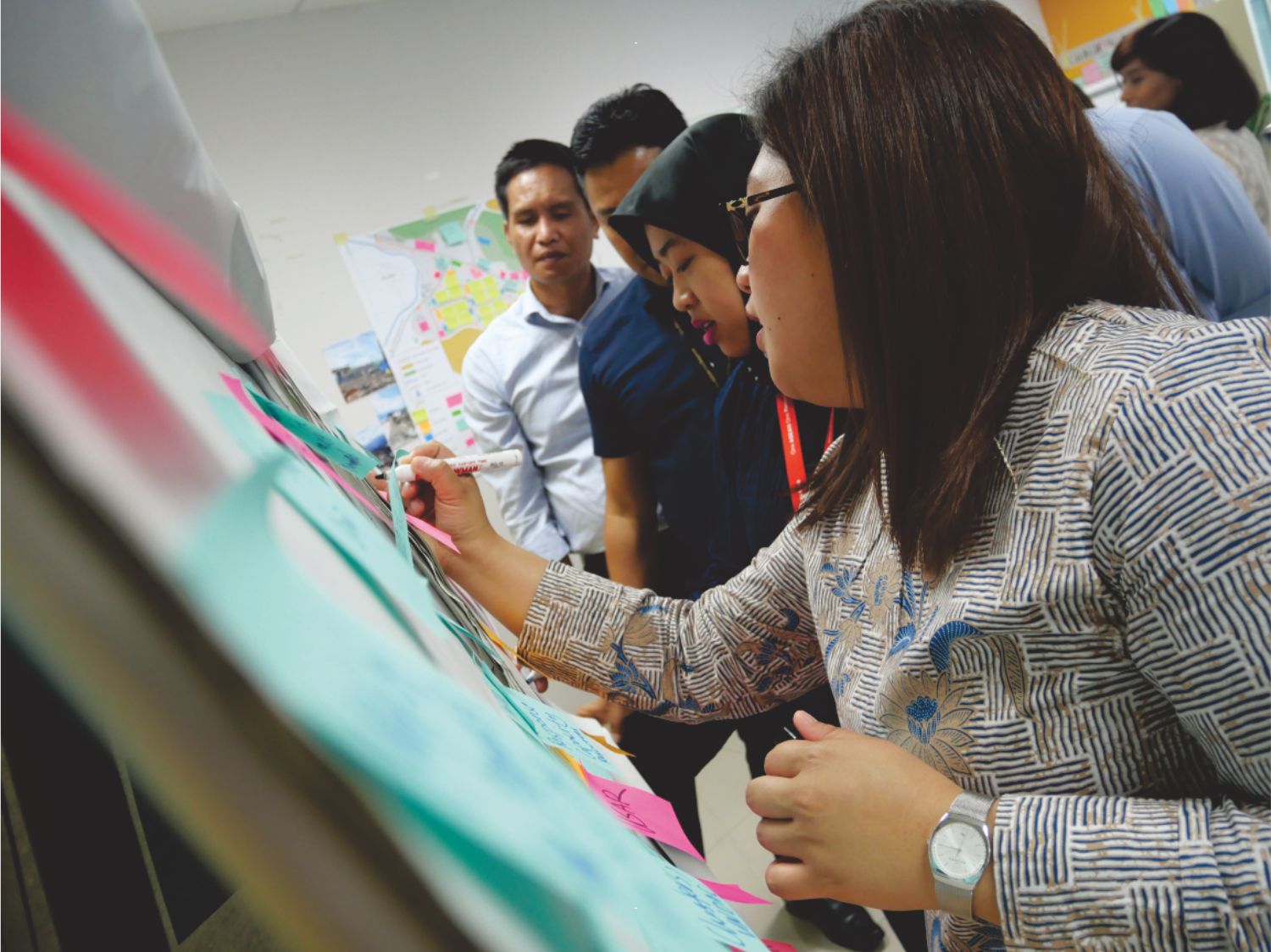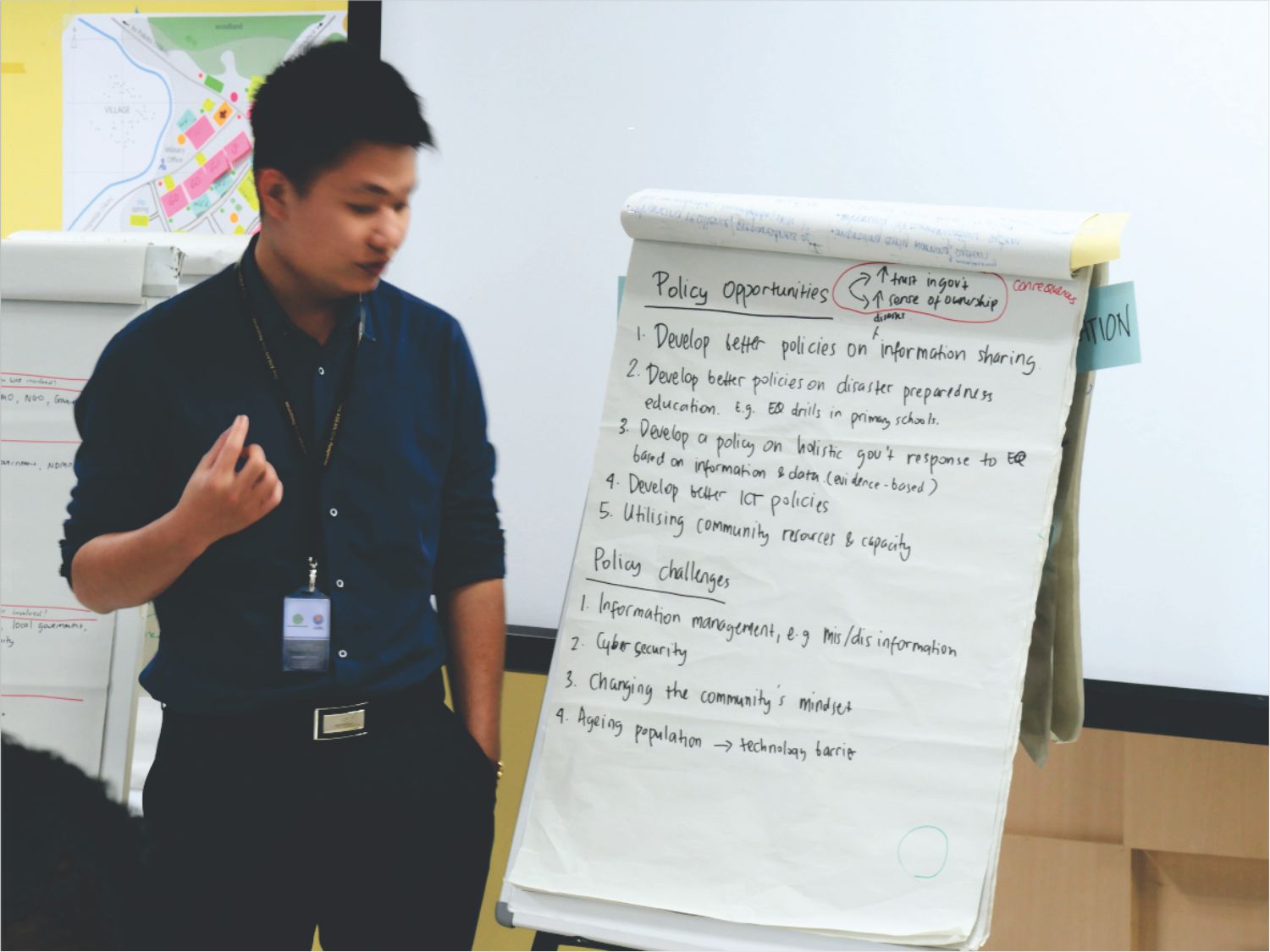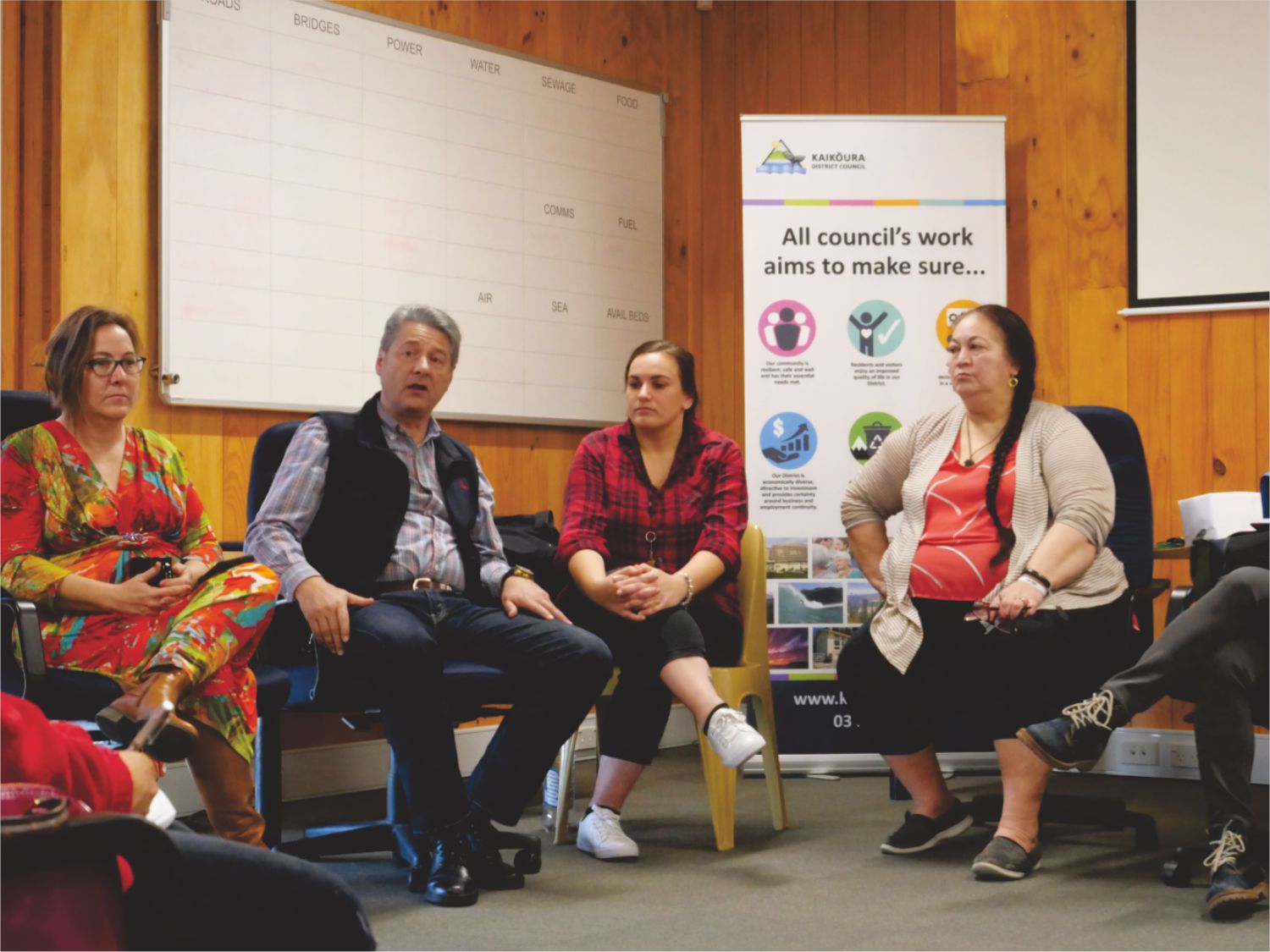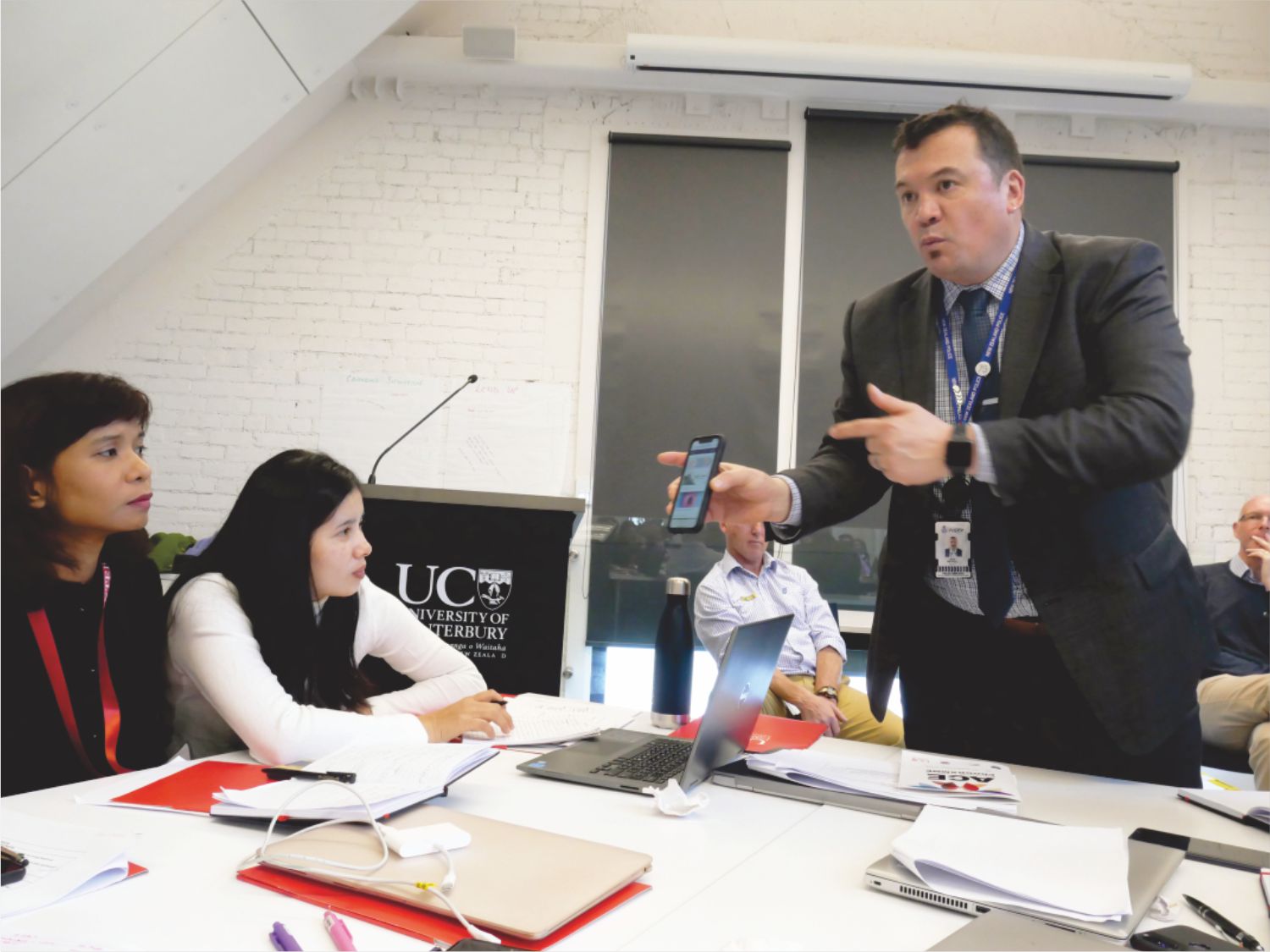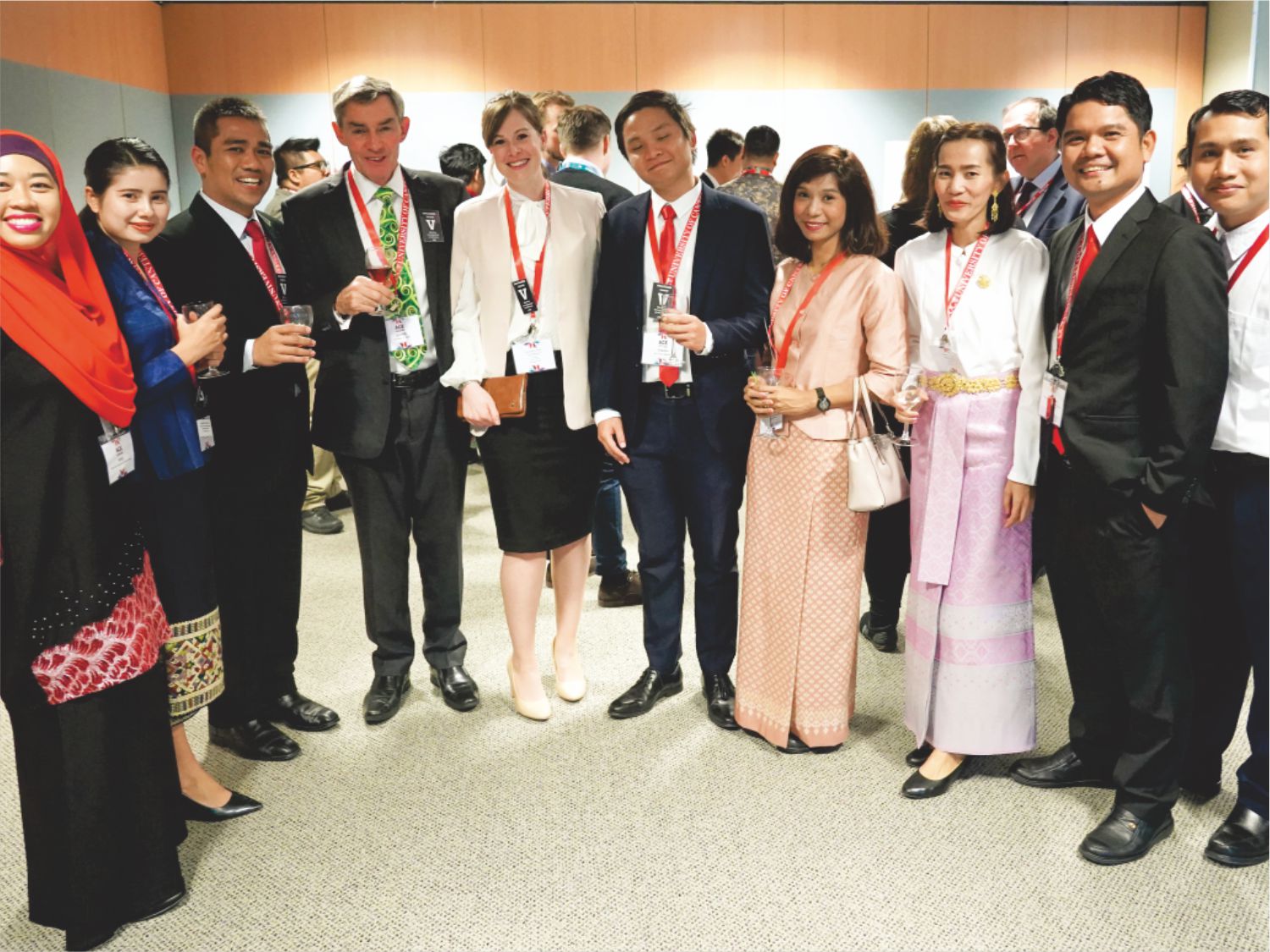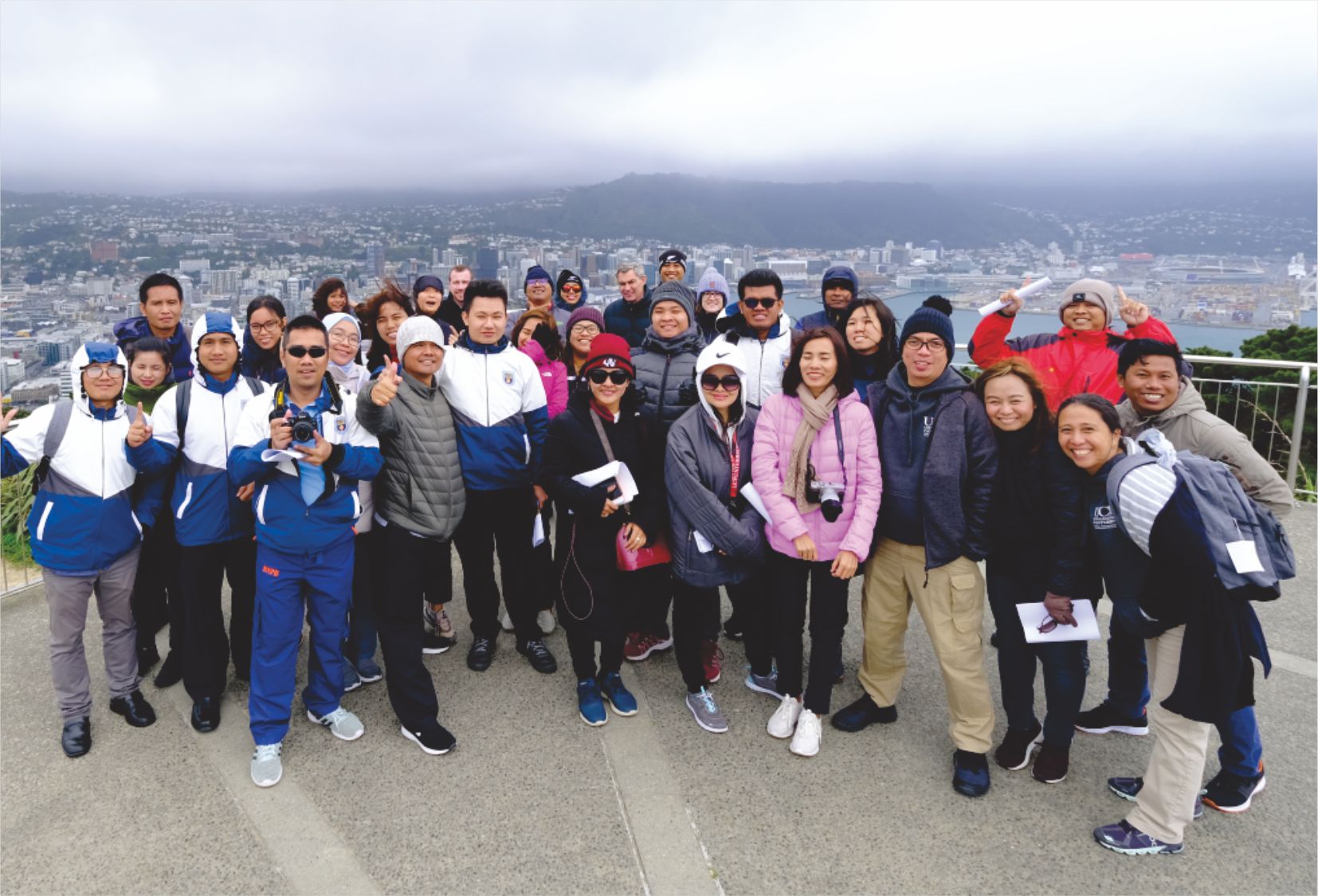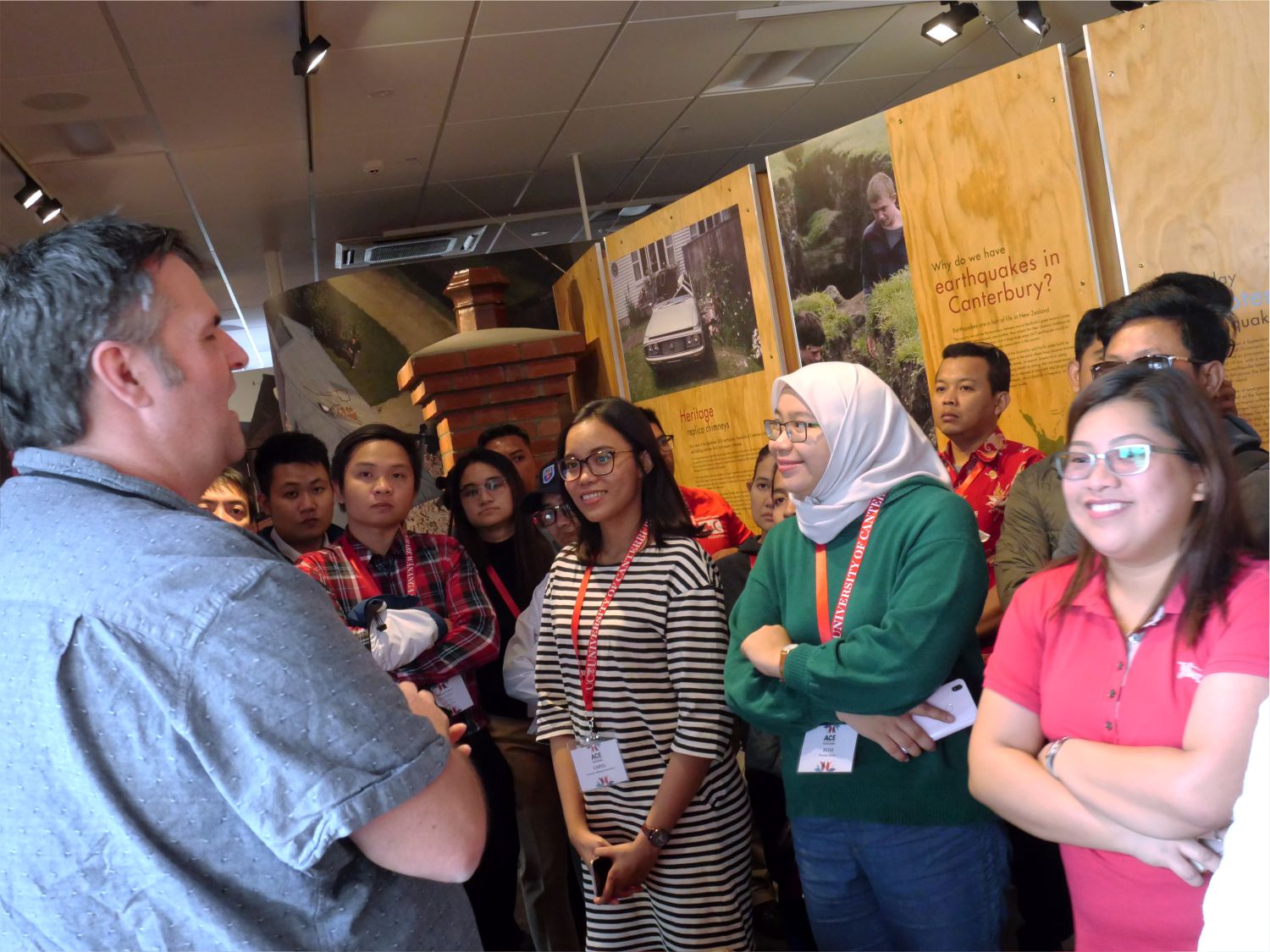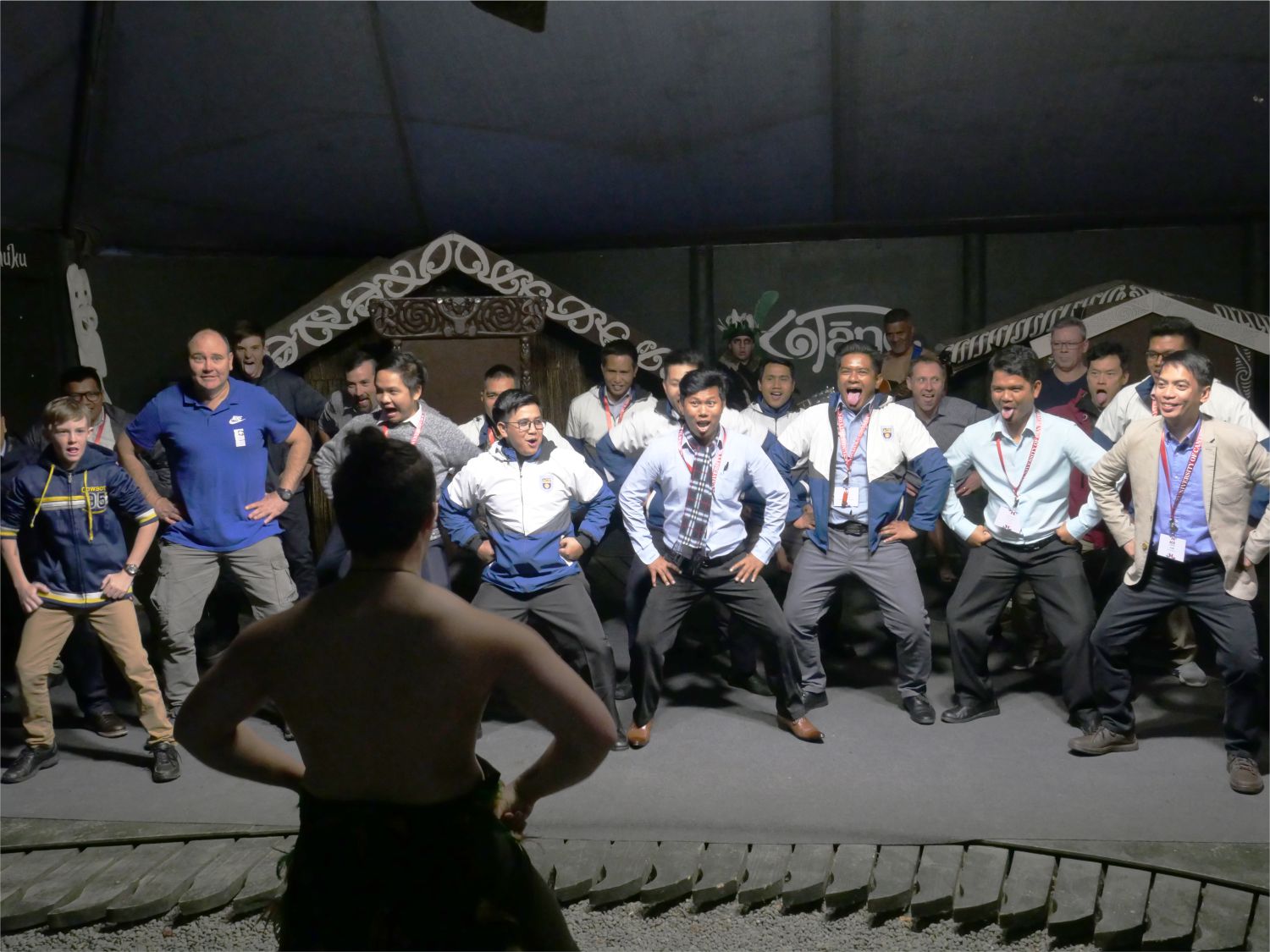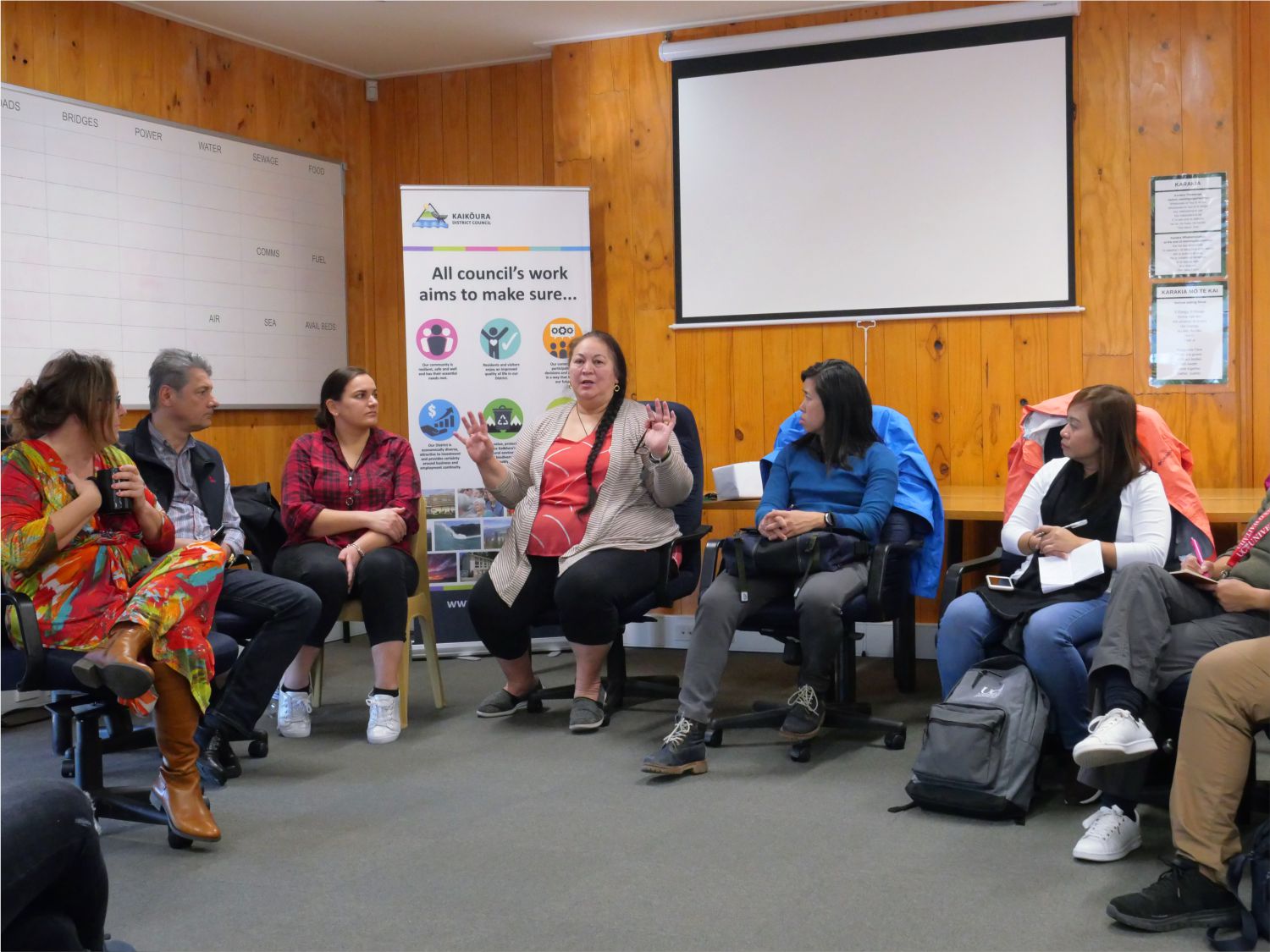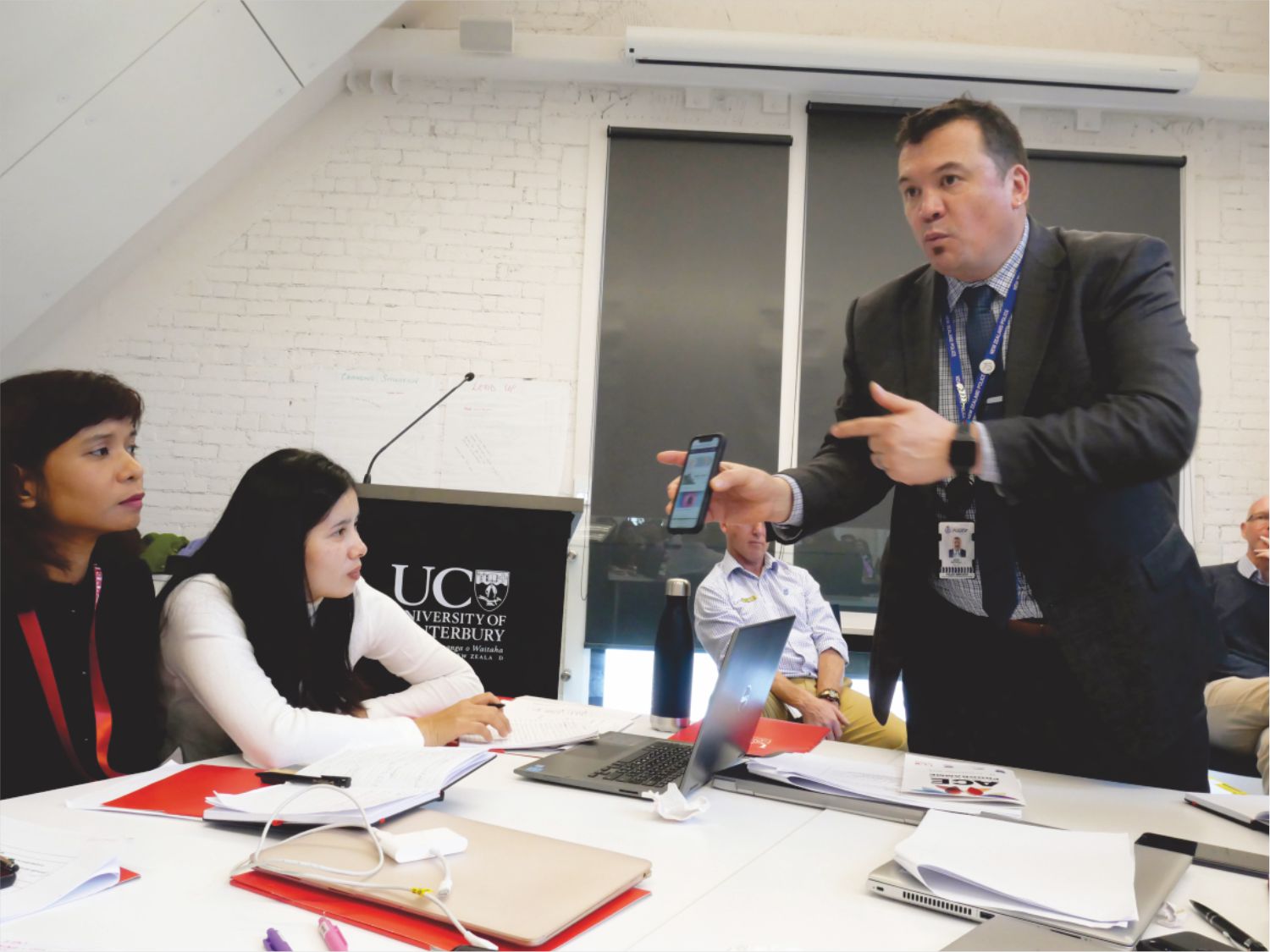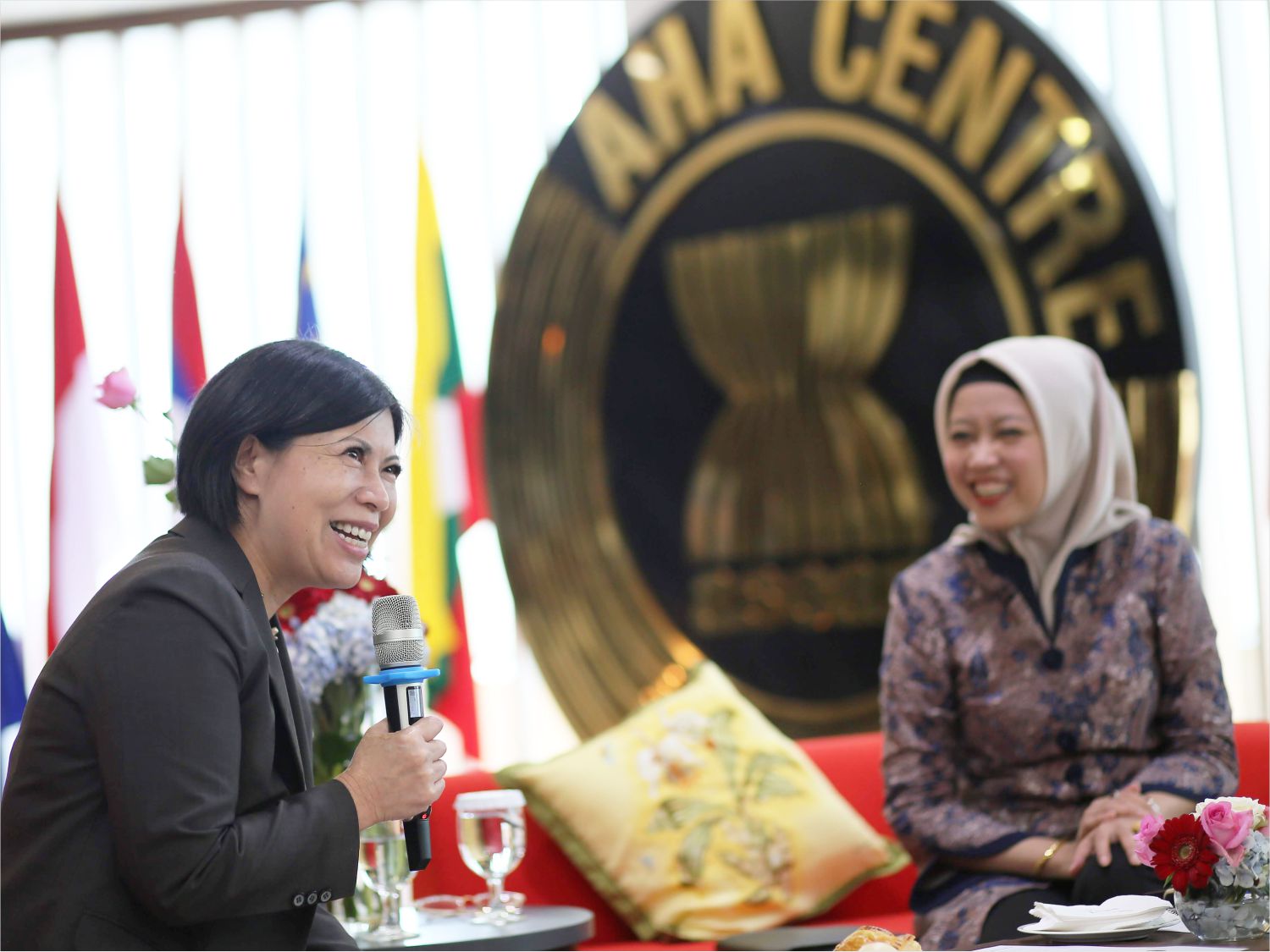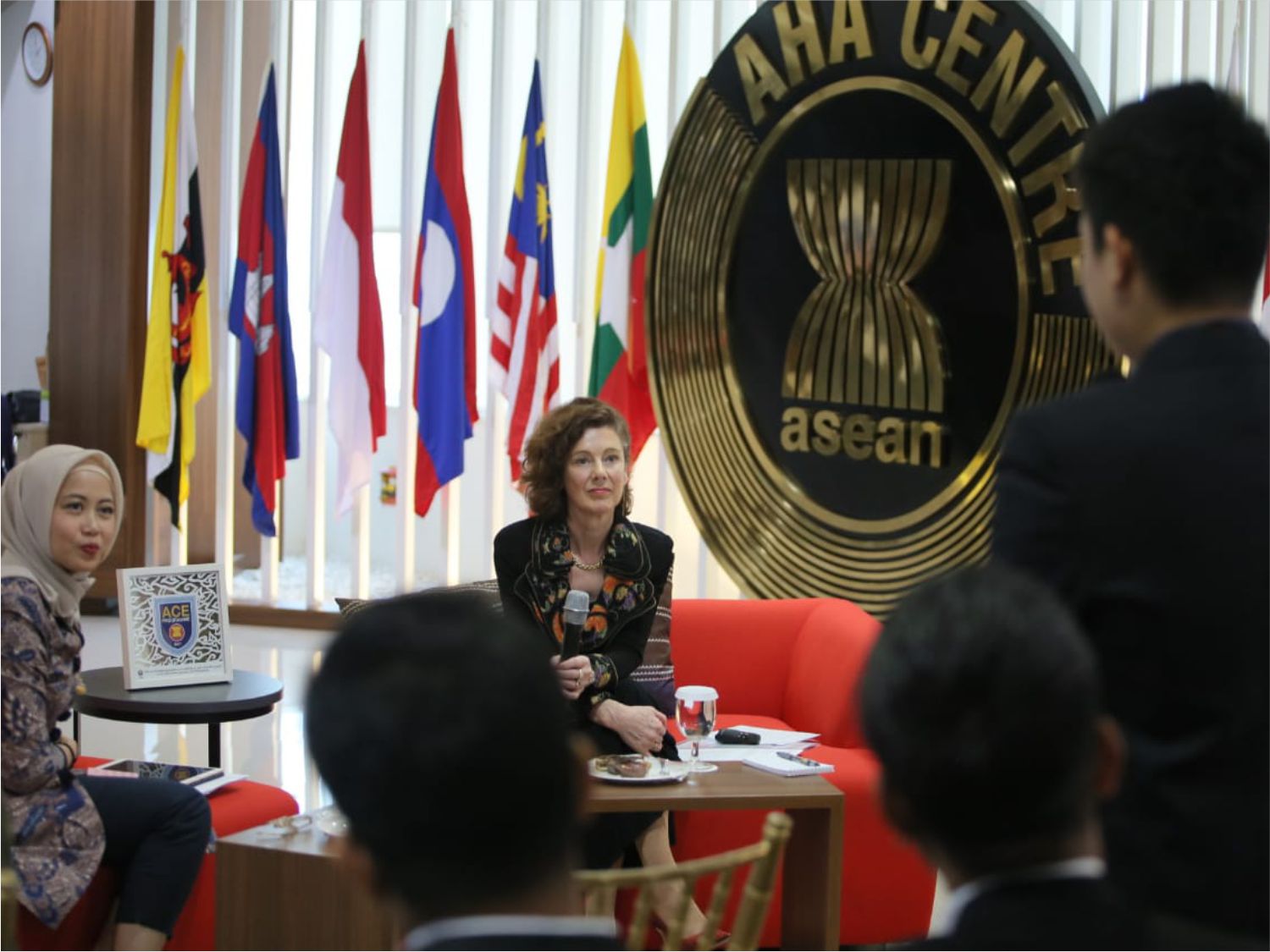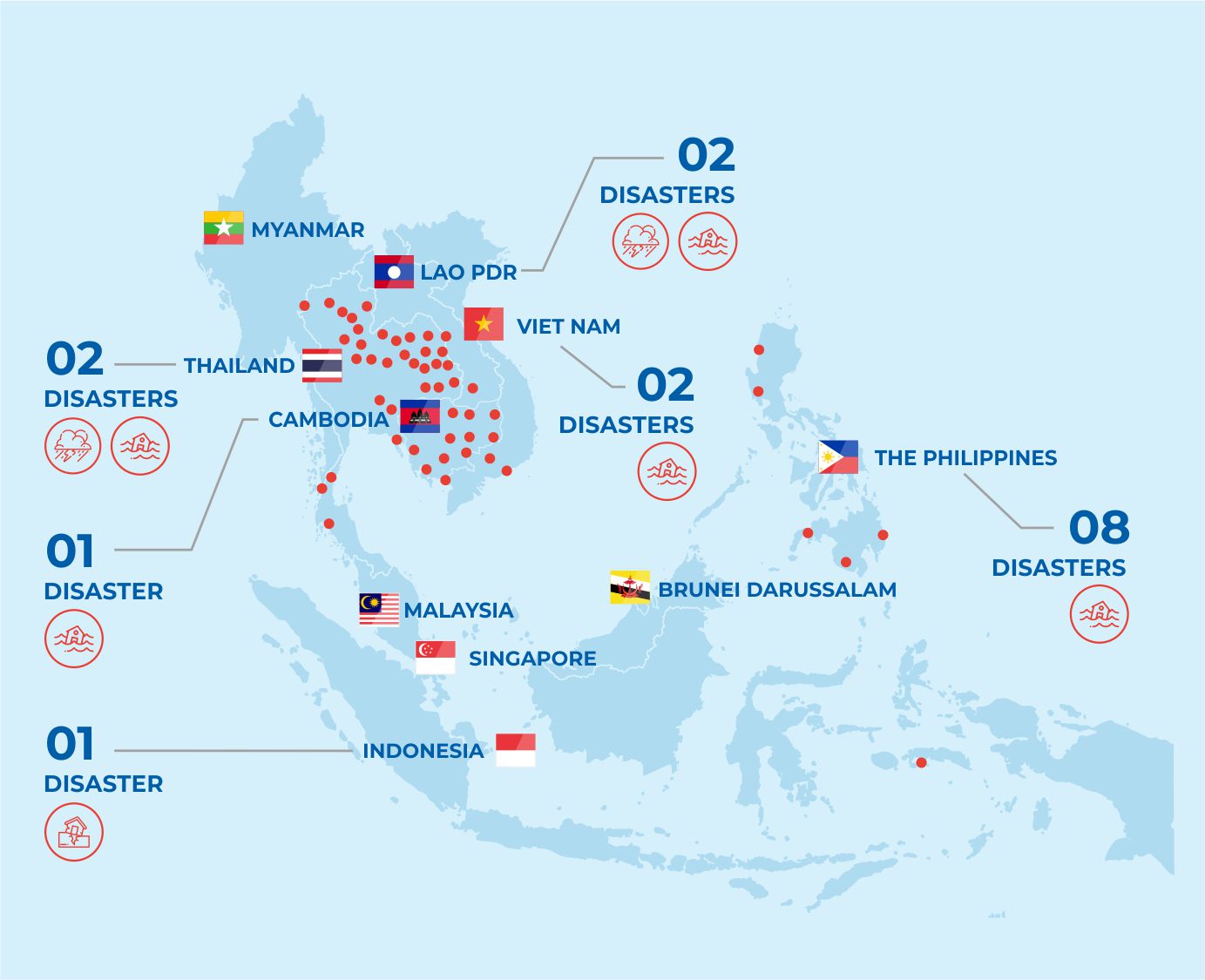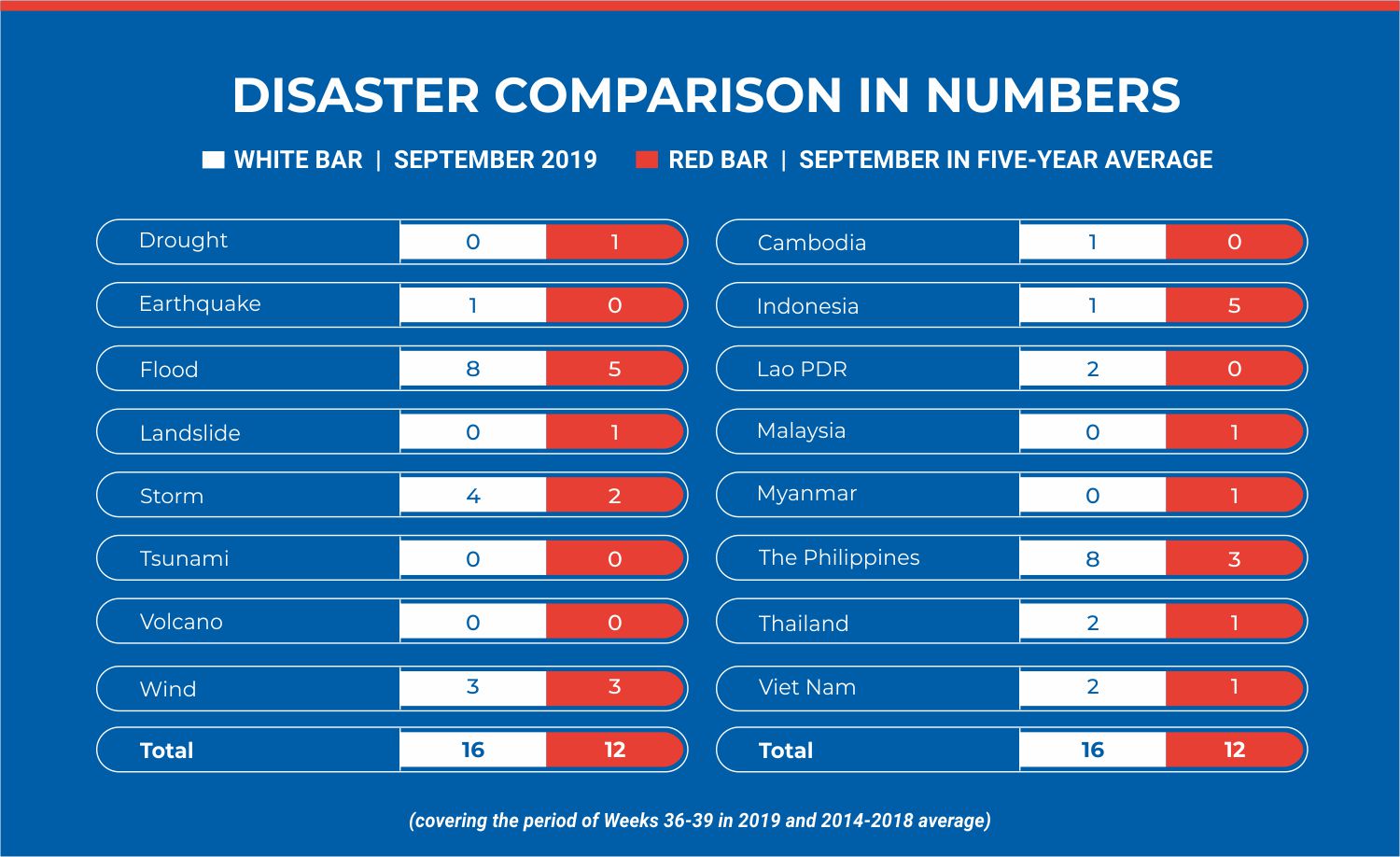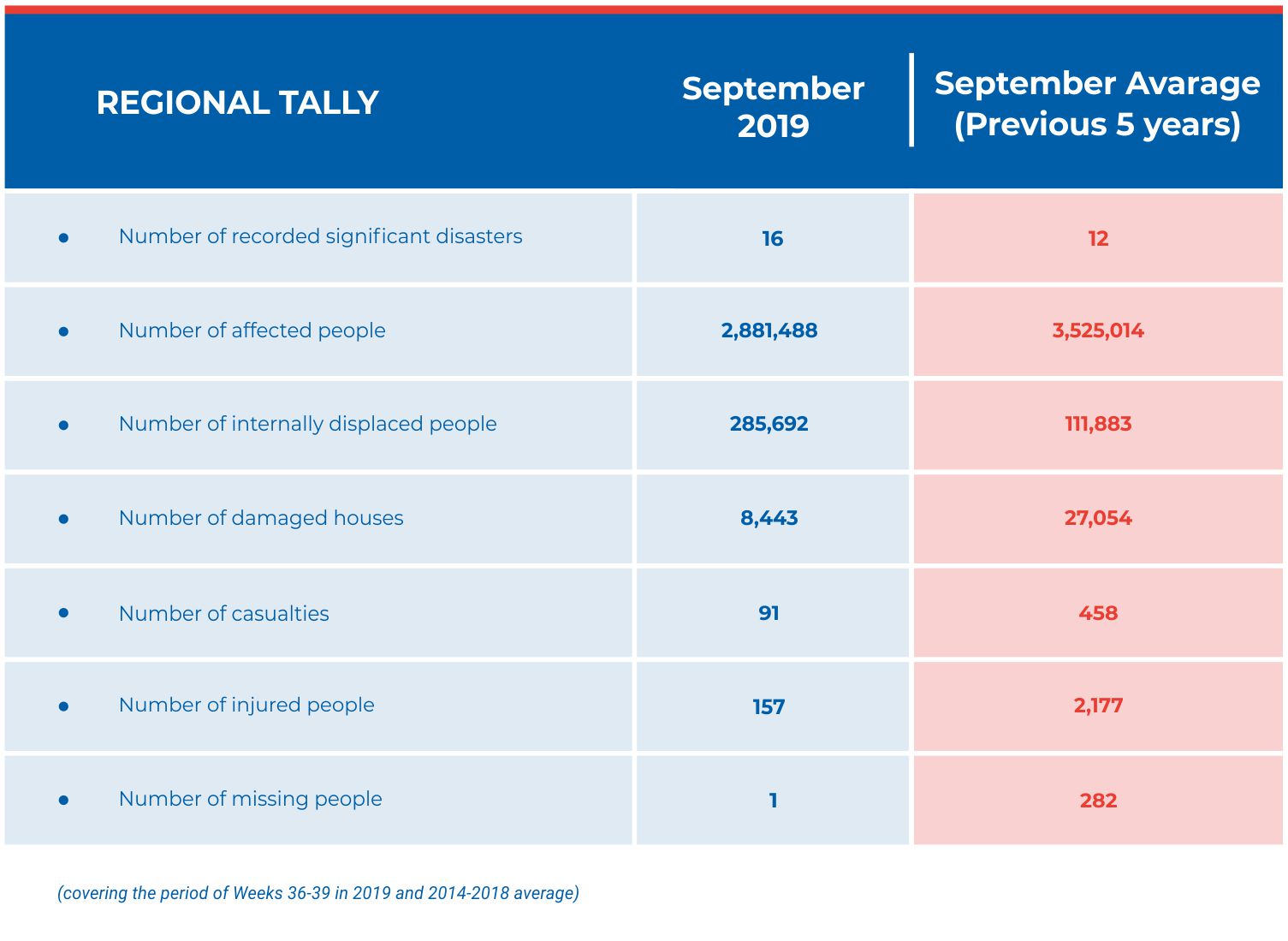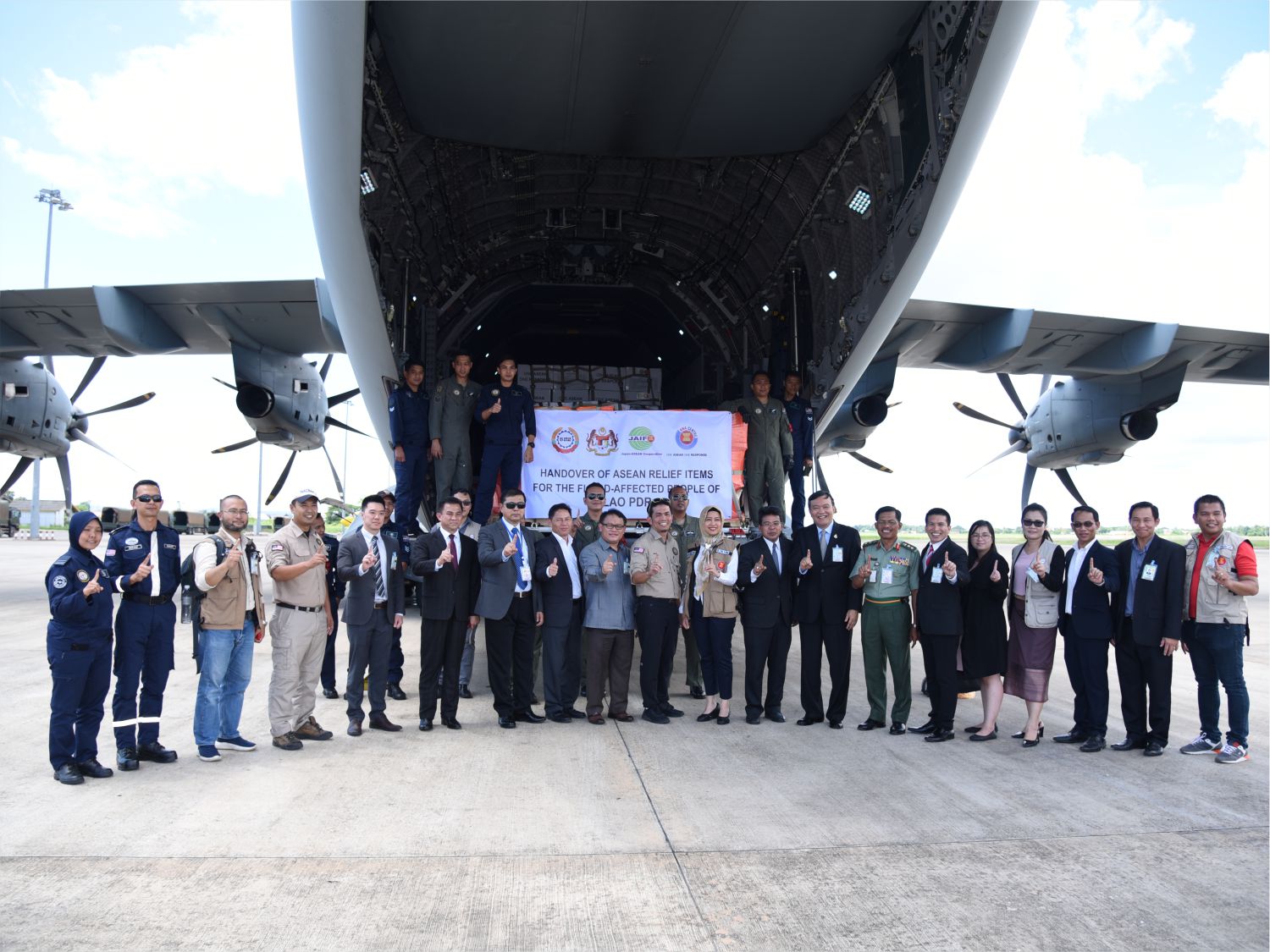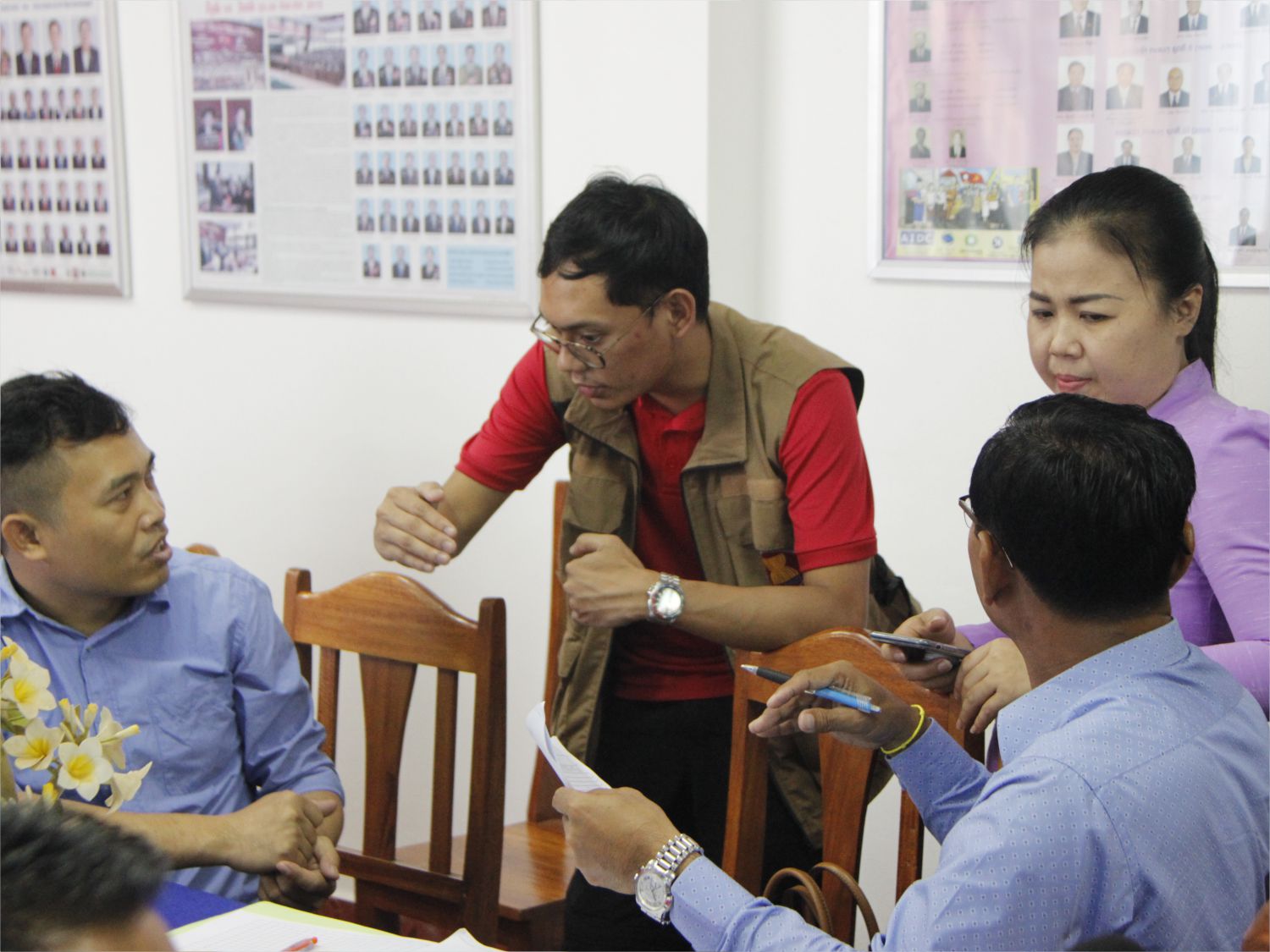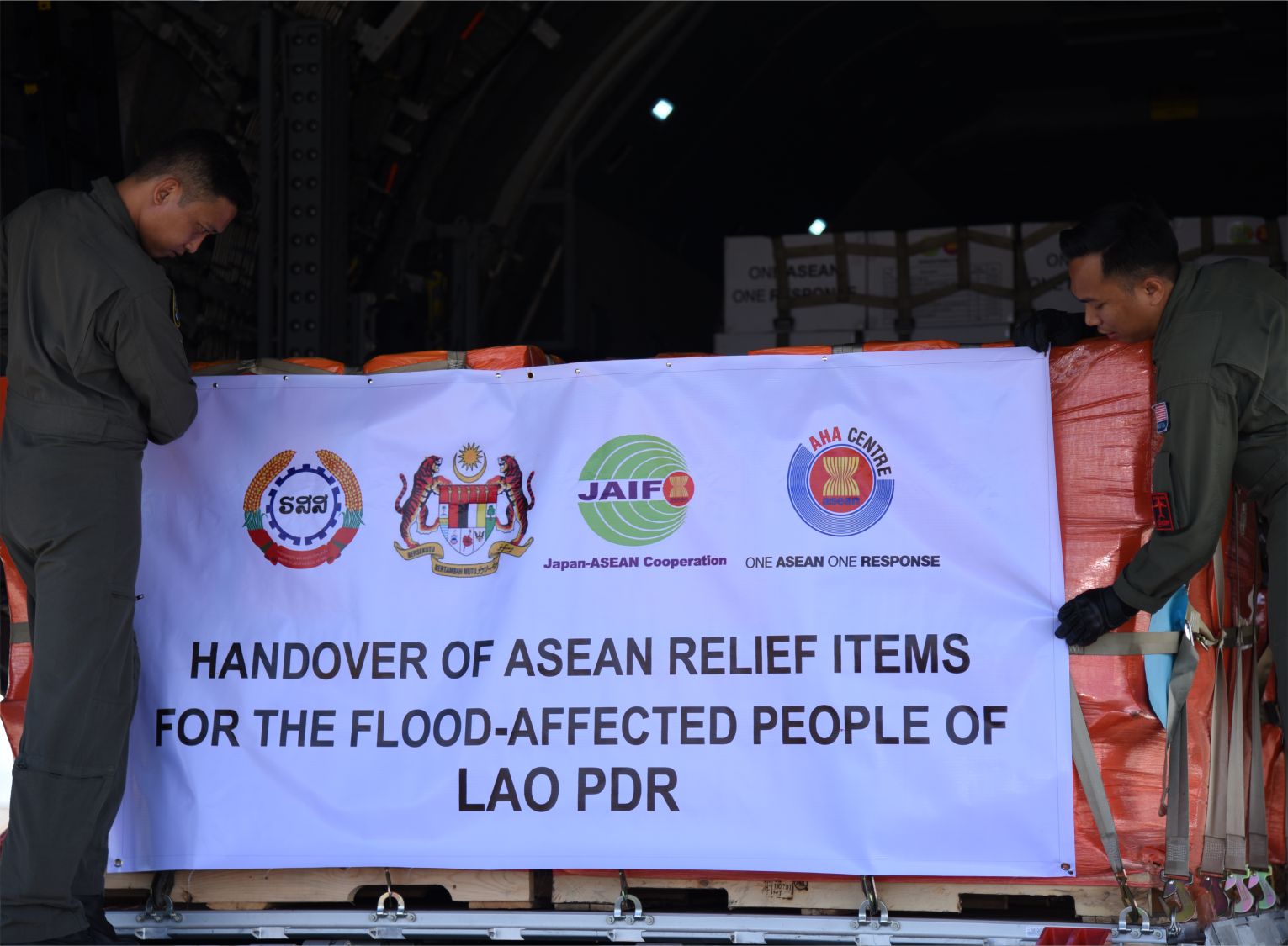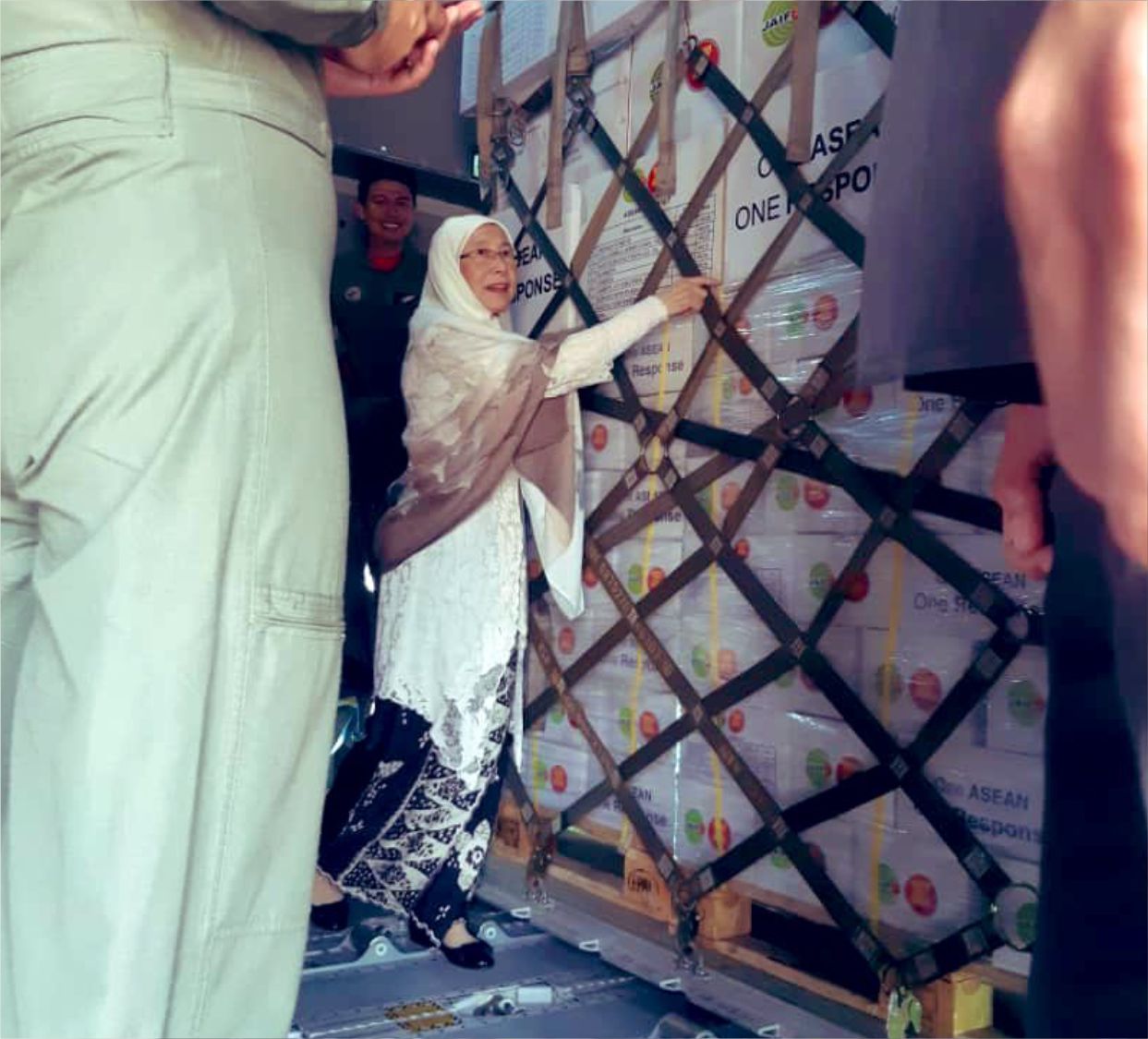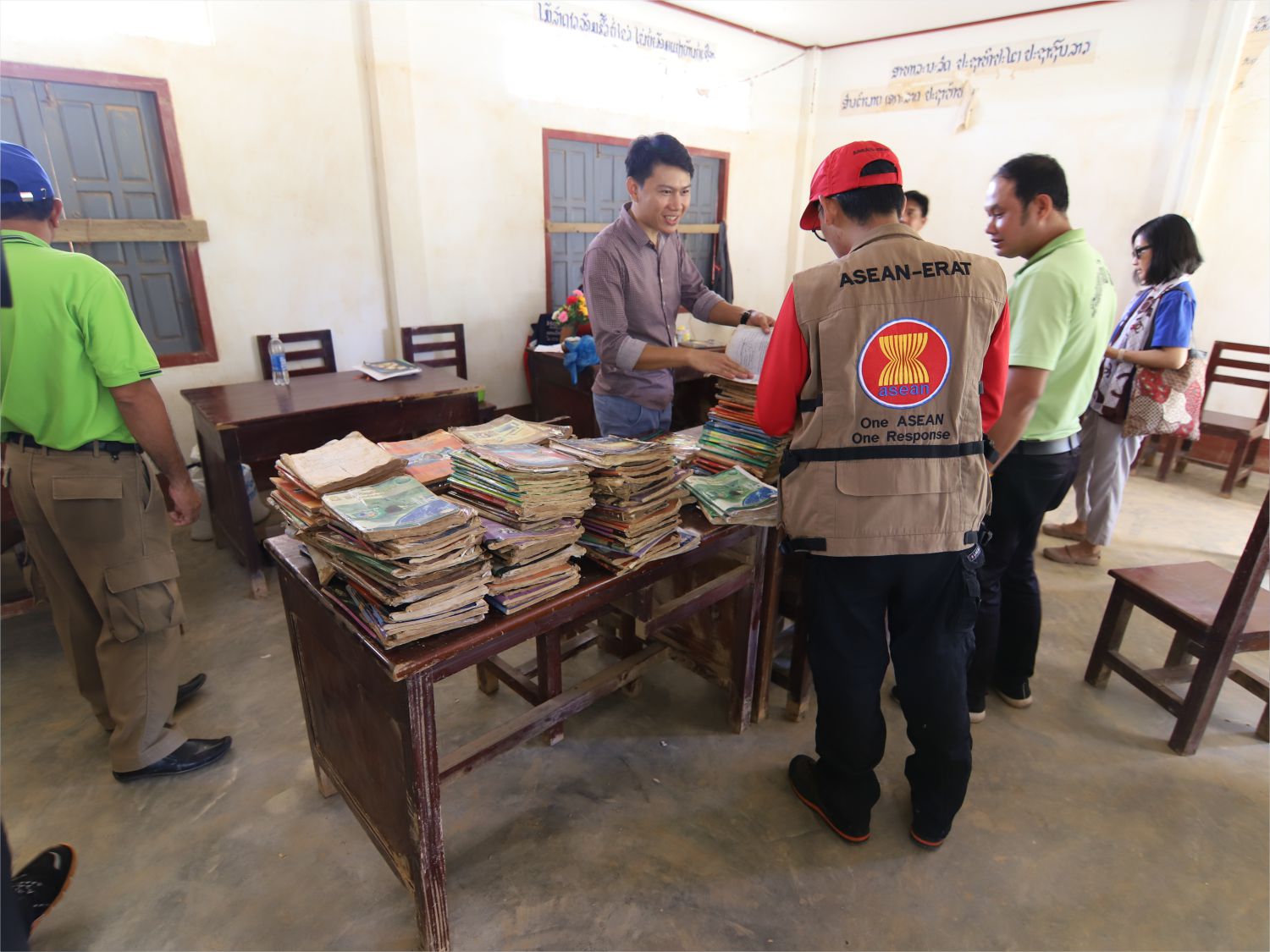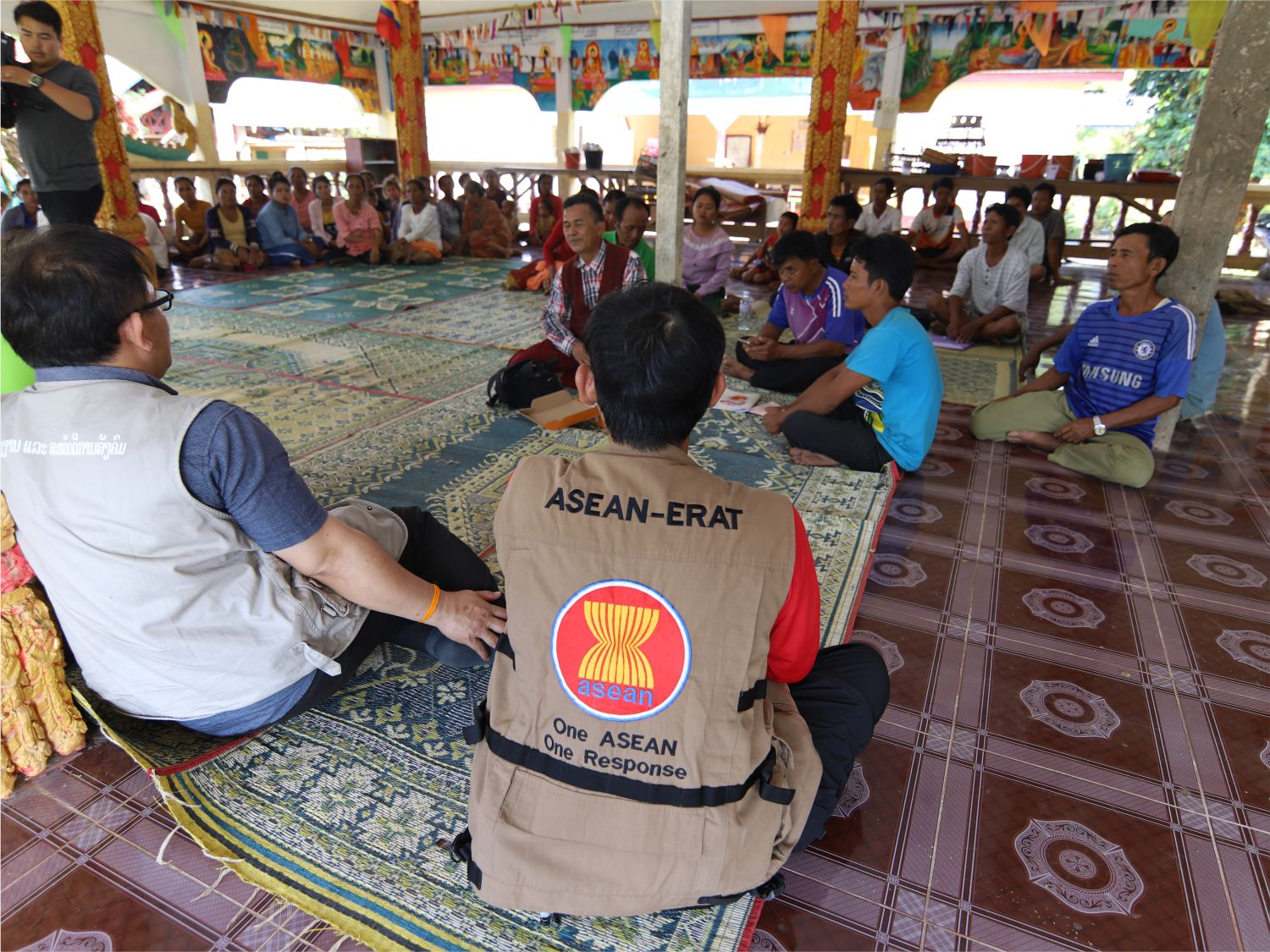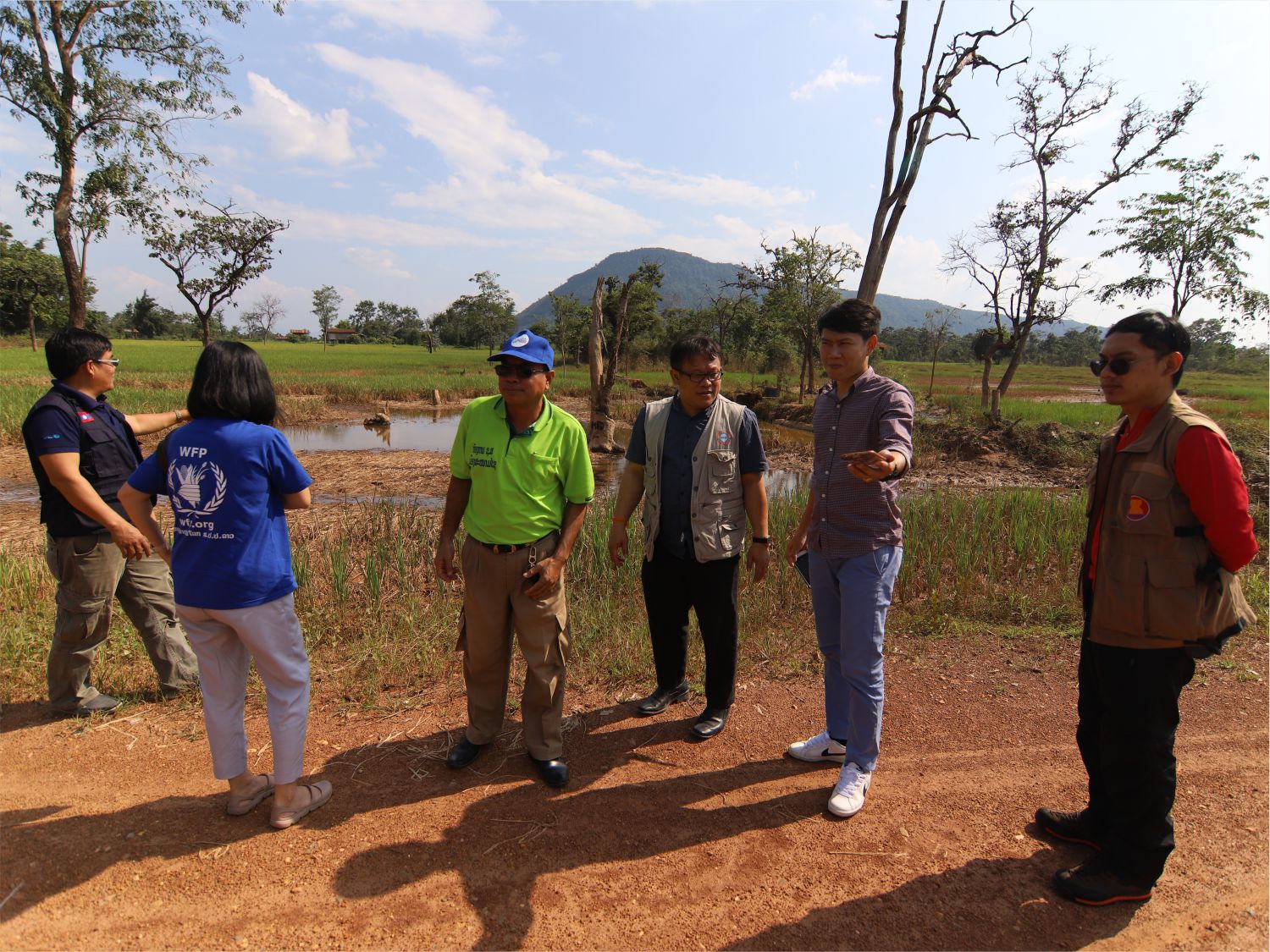Vol 55-CHRIS WEBB

CHRIS WEBB
Having played a large role as a facilitator within the AHA Centre Executive (ACE) Programme over recent years, New Zealand’s Chris Webb continued his interaction with the ASEAN region’s next disaster management leaders during 2019’s programme, taking on his role as the lead facilitator of the Critical Incident Leadership course. Alongside engaging with participants to learn about new concepts such as meta-leadership in Jakarta and then in New Zealand, Mr Webb also worked with the group during a number of their activities visiting New Zealand’s disaster management sites and institutions.
Before taking on a role as a facilitator, Mr Webb worked in the New Zealand National Ministry of Civil Defence and Emergency Management (MCDEM) as Professional Development Manager, and for the 12 years before that he was the head of the Emergency and Disaster Management Department at the Auckland University of Technology, New Zealand. Mr Webb’s postgraduate qualifications in Emergency and Disaster Management also come from the same university, and add to his vast knowledge and experience in the disaster management sector.
Engaging as a facilitator in the ACE Programme for the past five years, including during 2019 in Jakarta and the New Zealand study trip, Mr Webb states that he has enjoyed every minute of the experience, and is always impressed with the enthusiasm that ACE participants show towards learning. He is confident that ACE graduates will strongly contribute to the future of disaster management in their own nations, as well as in the wider circles of the region and the world. Mr Webb feels that the relationships established and maintained by ACE participants definitely have great value for the One ASEAN, One Response vision. He likes to use the term “Leadership is a journey – a personal journey”, and at the end of the programme often sees that participants have embraced this form of personal development within their own context.
Outside of the ACE Programme itself, Mr Webb also believes that the greatest need for the ASEAN region is that Member States and supporting bodies continue to extend their focus outside of just disaster response, and further into the areas of disaster risk reduction and public education. He reminds us that disaster is very complex, and that the world of disaster management is part of the environment that is Volatile, Uncertain, Complex and Ambiguous (VUCA). Establishing and maintaining relationships, as well as communicating and leading across a wide range of groups, cultures and thinking preferences is critical as ASEAN continues to move forward in disaster management. He says that as future leaders in ASEAN, ACE participants must acknowledge that leaders need to work with others, and must learn to lead themselves. Being a self-reflective leader is critical in disaster management, and it forms an area that Mr Webb is passionate about.
Mr Webb finishes his chat with us by highlighting what he sees as one of the greatest opportunities for the AHA Centre to have a valuable influence in global disaster management – which according to him is the Centre’s own experience, and the reality of such experiences. The AHA Centre understands the complexity of managing disaster within populous areas and with a variety of different cultures and peoples. He reminds us that there is a wealth of experience within ASEAN, and if this can be harnessed further, it could contribute greatly to the current body of global disaster management knowledge.
Written by : Putri Mumpuni | Photo : AHA Centre
- Published in The Other Side
Vol 55-ACE PROGRAMME DIARY SEPTEMBER

ACE PROGRAMME DIARY SEPTEMBER
During September, participants in the AHA Centre Executive (ACE) Programme’s sixth batch engaged once more in training, discussions and practical activities across ASEAN and abroad. The following diary entries were developed by the team to reflect on their journey during the month.
WEEK-1
Early September saw ACE participants journey to Palu, Central Sulawesi, to undertake Red Cross and Red Crescent Induction and Operations training course. During the first three days of training, facilitators covered several topics, such as: the Fundamental Principles of the Red Cross and Red Crescent Movement; an introduction to the Framework and Roadmap for Community Resilience: Building Safer and Resilient Communities; the Strategy on Disaster Preparedness and Response; IFRC Response tools; Shelter Programme; Protection; Gender, and Inclusion Training; an Introduction to Disaster Law, and; Coordination and Communication Mechanisms.
Following this, ACE participants visited Garuda Camp of the Indonesian Red Cross in Palu to see the camp organisation, as well as undertake training on Management of the Dead with the ICRC. Participants also visited a liquefaction area, schools that have been rebuilt, as well as temporary camps, to learn more about the impact of the 2018 disaster. Participants were also invited to witness the location and process of the AHA Centre in building the ASEAN Village.
WEEK-2
ACE participants were taught on the importance of Incident Command System by the United States Department of Agriculture Forest Service (USFS). This course constitutes different components found in a disaster response team – from the different types of people to the common tools used. It was a very insightful programme as participants gained an in-depth understanding about the roles of the different staff and resource management methods in relation to responding to a disaster. Other than the roles, they were also able to identify different planning methods used by staff that may be of great value in the future. The ICS programme exposed a unique paradox about complexity, by understanding its literal definition and how and why it is complex.
This course also highlighted six types of ICS facilities and their facility map symbols. One of the course’s highlights was the Resource Management Principles, that enabled participants to be more organised and strategic in their group activities. Another valuable activity was the Planning Cycle lesson, that introduced ICS forms that are helpful for planning and recording data during an incident. The facilitation methods for technical and comprehensive information using interactive and enjoyable approaches successfully united ACE participants and attracted participants to engage fully during group activities.
WEEK-3
This week ACE participants embarked on their study visit to New Zealand, and began their engagement in the 14-day Critical Incident Leadership Course. Participants undertook classroom sessions and study tours to the campus of the University of Canterbury in Christchurch, as well as visiting hazard sites around the city of Christchurch, and the Kaikoura District. Participants learned about the meta-leadership concept, thinking preference, understanding local government response, and also met leaders from different agencies from the area of disaster management in New Zealand.
Participants also had the opportunity to meet the communities that experienced earthquakes in Christchurch during 2011, and the 2016 earthquake in the Kaikoura District. Alongside an introduction to the culture and traditions of the Maori and the people of New Zealand, meeting communities also taught participants about the importance of community as a fundamental component in ensuring effective preparedness, response and recovery in disaster management.
WEEK-4
During week 4 of September, ACE participants continued their journey to New Zealand’s north island, visiting sites in the cities of Wellington and Auckland. In Wellington, the ACE participants were hosted at a warm reception by the Ministry of Foreign Affairs and Trade (MFAT) – who support the Critical Incident Leadership course for ACE programme – before visiting the Museum of New Zealand Te Papa Tongarewa to learn about the hazardscape and history of the country. Here they also witnessed the base isolator system adopted by New Zealand, developed to make buildings safer from earthquakes. They visited the Wellington Region Emergency Management Office and learnt of New Zealand’s efforts in engaging its community in disaster preparedness and risk reduction. One example of the community ground-up initiative is the implementation of a tsunami blue-line that clearly indicates the tsunami safe zone based on scientific simulation studies. This learning on community engagement efforts continued in Auckland, during the visit to the Auckland Emergency Operations Centre. The highlight of the week was when participants were required to deliver a 5-minute speech to reflect on their learning journey in New Zealand, with all rising to the challenge and sharing valuable insights and thoughts with the class.
Written by : Rina Nur Hafizah, Sridewanto Edi Pinuji, Amelia Justina Lim, Callista Amira Sandi, Putri Mumpuni | Photo : AHA Centre
- Published in AHA Centre Diary 1
Vol 55 – NEW ZEALAND MINISTRY OF FOREIGN AFFAIRS & TRADE

NEW ZEALAND PARTNERSHIP WITH AHA CENTRE
With the AHA Centre Executive (ACE) Programme taking place during the second half of 2019, we will bring to you insights of AHA Centre partners at work – showcasing their input and value through their engagement in the ACE Programme
The New Zealand Government is one of the AHA Centre’s original partners – dating back before the official establishment of the Centre in 2011 – and has continued its strong support for disaster management with the AHA Centre through its engagement in the ACE Programme. The New Zealand Ministry of Foreign Affairs & Trade (MFAT) through the New Zealand Aid Programme has provided ACE Programme support since 2014, and has engaged a number of other New Zealand institutions within the effort to build a generation of future ASEAN leaders in disaster management.
During the 2019 ACE Programme implementation, MFAT – supported by the University of Canterbury – delivered a number of activities with the programme participants, including key courses on Introduction to Hazards and Critical Incident Leadership (CIL). They also worked with participants in Jakarta to prepare for their visit to New Zealand to engage in the courses. These courses were co-developed by MFAT and the AHA Centre, and stand as MFAT’s key contribution within the ACE Programme. The CIL course is a 150-hour component of the ACE curriculum that concentrates on the development of critical incident leadership skills, communication, and exercise management for the future disaster management leaders in ASEAN. Undertaken in New Zealand, CIL specifically targets areas of strategic thinking, proactive planning, decision-making, and situational awareness based on engagement with stakeholders in disaster management.
MFAT support the in-country course delivery as part of an overall 2-week study trip that took participants to institutions and disaster sites throughout the four New Zealand cities of Christchurch, Kaikoura, Wellington and Auckland. The participants engaged in lectures from researchers and practitioners, including cultural experience and community insights from Maori tribe representatives (Ngai Tahu – Maru Kaitatea) about response and resilience after the 2016 earthquake in Kaikoura. Participants learnt about the Maori’s values on resilience to natural disaster, where people of Maori descent aim to protect their resources (taonga) to prevent disaster and to preserve their livelihood and sustainability.
Alongside the preparation for courses in Jakarta, and the study trip itself, MFAT also provides support to the ACE Programme through professional engagements delivered by prominent individuals such as Her Excellency Pam Dunn, Ambassador of New Zealand for ASEAN for the ACE Programme in 2018, and Her Excellency Jo Tyndall, New Zealand High Commissioner to Singapore for the ACE Programme in 2019. They engaged as speakers in the ACE Programme Leaders Talks, which allow participants to learn about leadership through their expertise and experience being the world’s key leaders themselves. Through inputs such as these, MFAT and the Government of New Zealand have opened the minds and worlds of 97 ACE Programme participants so far, and continue to provide their valuable support and experience to the ACE Programme and the AHA Centre as a whole.
Written by : Putri Mumpuni | Photo : AHA Centre
- Published in Partnership
Vol 55-MONTHLY DISASTER REVIEW AND OUTLOOK

MONTHLY DISASTER REVIEW AND OUTLOOK
SEPTEMBER 2019 | DISASTER MONITORING & ANALYSIS
(DMA) UNIT, AHA CENTRE
GENERAL REVIEW OF SEPTEMBER 2019
During the month of September 2019, there were 16 reported disaster events throughout the ASEAN region, registering at 33% higher than the five-year average. Half of the reported events were flood events (8 in total), which is 60% higher than the five-year average. The flooding was caused by the enhanced effect of the Southwest Monsoon, due to the sequential occurrence of Tropical Storm PODUL and Tropical Depression KAJIKI in early September. These storms resulted in flooding across Lao PDR, the Philippines, Thailand, and Viet Nam. Besides the transboundary storm and flood disaster events, an M6.5 Earthquake in the last week of September struck Ambon, Indonesia, displacing more than 200,000 people.
On the other hand, general impact figures – such as the number of people affected, damaged houses, and casualties – were lower for September 2019 compared to the previous five-year average. This could be explained by the occurrence of several severe, high-impact disaster events in September 2018, including the M7.5 Earthquake and Tsunami in Central Sulawesi, Indonesia, the M6.4 Earthquake in the Philippines, and Typhoon Mangkhut which affected the northern part of the Philippines, Malaysia, and Viet Nam. In total, these events affected about 10 million people, while 2017 saw massive droughts in Indonesia, which affected around 4 million people.
During the month of September, the AHA Centre activated its Emergency Operations Centre to support the flooding event that affected six provinces in the southern part of Lao PDR. Besides sending relief items, together with the help of the Royal Malaysian Air Force (RMAF) and the United Nations Humanitarian Response Depot (UNHRD) partners, the AHA Centre also deployed its In-Country Liaison Team (ICLT) and an ASEAN-ERAT Information Management specialist to provide support in planning, training, and implementing a joint rapid needs assessment in Lao PDR. The AHA Centre also provided remote support to the National Disaster Management Organisation (NDMO) of Lao PDR for data visualisation and mapping purposes.
SEASONAL OUTLOOK
According to the ASEAN Specialised Meteorological Centre (ASMC), the inter-monsoon period will be expected to start in early October 2019 over the ASEAN region. This seasonal period is mainly characterised by light and variable winds, together with rainy conditions in the equatorial area, which can improve hotspot activities and the haze situation. This state may persist for several weeks before giving way to the Northeast Monsoon season in late November or early December.
Furthermore, the El-Nino phase will remain “neutral” at least until the end of the year. Separately, above-normal temperatures over most parts of the ASEAN region can be expected, with the northern ASEAN region to enter its traditional dry season. Meanwhile, below-normal temperatures are expected in the eastern part of the Indian Ocean, due to the positive phase of the Indian Ocean Dipole (IOD), which could also reduce the rainfall intensities in the southern ASEAN region.
Data Sources: ASEAN Disaster Information Network, ASEAN Specialised Meteorological Centre
Written by : Lawrence Anthony Dimailig, Lawrence Aporto, Shahasrakiranna, and Justin Chin Jin Jie
DISCLAIMER
Disclaimer: AHA Centre’s estimation is based on data and information shared by National Disaster Management Organisations (NDMOs) and other relevant agencies from ASEAN Member States, international organisations and news agencies. Further information on each recorded-significant disaster, description and detail of data and information are available at: http://adinet.ahacentre.org/reports.
- Published in Monthly Disaster Outlook
Vol 55 – ASEAN RESPONDS TO FLOODS IN LAO PDR

ASEAN RESPONDS TO FLOODS IN LAO PDR
The formation of Tropical Storm ‘Podul’ was first identified on August 27, 2019, with the AHA Centre intensifying its monitoring efforts based on the potential size and impact of the storm. As September arrived, so too did a large Low Pressure Area (LPA) and a Tropical Depression – known as Tropical Depression ‘Kajiki’. The combination of the LPA, tropical storm and tropical depression resulted in significant rainfall and flooding across 6 provinces in Lao PDR – Champasak, Saravan, Sekong, Savannakhet, Attapeu, and Khammouan. The AHA Centre quickly stepped up to the call of support from the Government of Lao PDR, and responded through various means to support the affected communities of the ASEAN Member State.
Ready to operationalise the spirit of “One ASEAN, One Response”, the AHA Centre worked quickly to support the Lao PDR Government’s response through coordination, information management, rapid needs assessment, and deployment of ASEAN relief items from the region’s Disaster Emergency Logistics System for ASEAN (DELSA) warehouse network. The AHA Centre’s In-Country Liaison Team (ICLT) was mobilised to coordinate the region’s response support, and also facilitated the handover ceremony of DELSA relief items in Vientiane on 12 September 2019. The relief items comprised of family kits (330), personal hygiene kits (2,596), kitchen sets (1,144), mosquito nets (1,400) and jerry cans (1,400), which were airlifted into the affected region by the A400M of the Royal Malaysian Air Force, from the DELSA regional stockpile in Subang, Malaysia.
The AHA Centre’s Information Management specialist and ICLT, together with representatives from the Ministry of Agriculture, Ministry of Public Works, Ministry of Education, and the Lao PDR Red Cross, also engaged in a National Joint Needs Assessment Planning Meeting implemented by the Director-General of Lao PDR’s Social Welfare Department in Vientiane. The AHA Centre worked collaboratively with in-country members of the ASEAN Emergency Response and Assessment Team (ASEAN-ERAT) to develop supporting tools and methods for the assessment efforts, to be translated into local language and provided to local staff for implementing the assessment in affected areas.
Flood waters began to subside on September 10, with conditions improving slowly through all affected provinces during the days that followed. The damage that remained was significant, with figures showing up to 89 bridges, 613 schools, 46 health centres and hospitals, 298 km of roads, 274,719 hectares of farmland, 574,742 livestock, and 36 reservoirs affected by the floods. Total damage is so far estimated at more than USD 10 million. Flooding and related hazards affected over 661,000 people, left 40,000 displaced, and resulted in the deaths of 18 souls. The AHA Centre’s Executive Director, Ms. Adelina Kamal, summed-up the region’s feelings when she spoke at the handover ceremony of DELSA relief items. “Our hearts and prayers are with the communities affected by the floods. The AHA Centre as a centre established by the ten ASEAN Member States, including Lao PDR, stands ready to enhance country-led response to alleviate the suffering of the flood-affected communities.”
Written by : William Shea | Photo Credit : AHA Centre
- Published in Highlight

